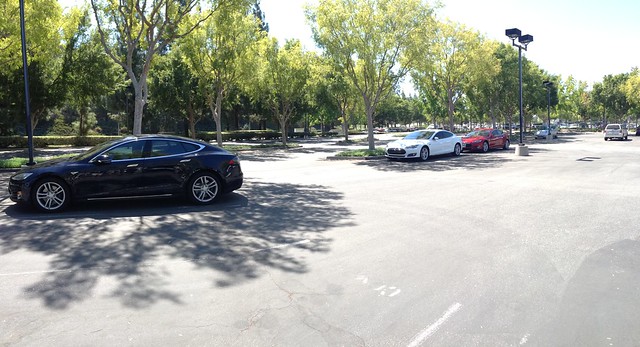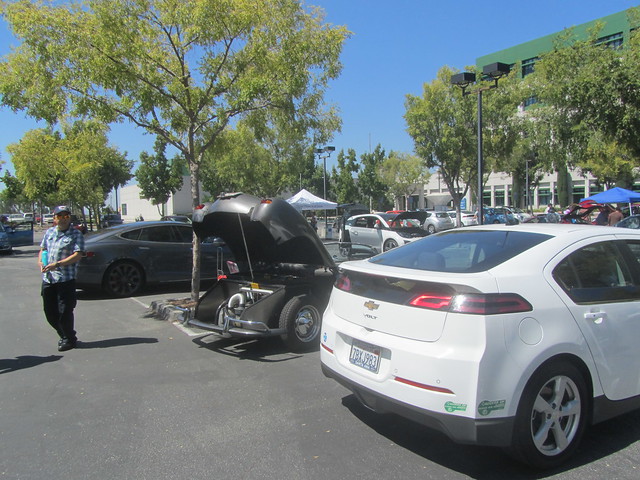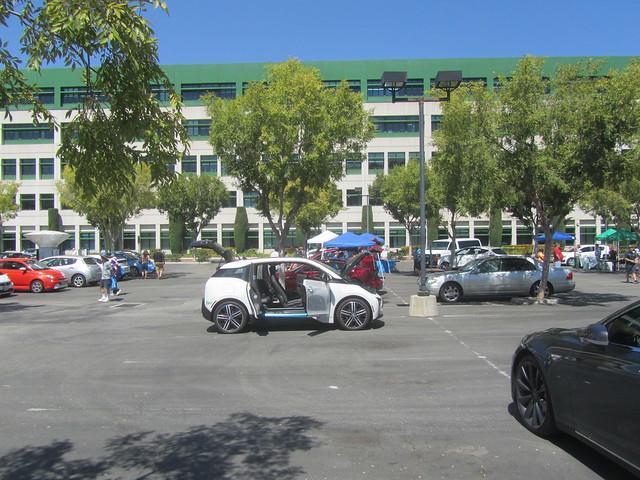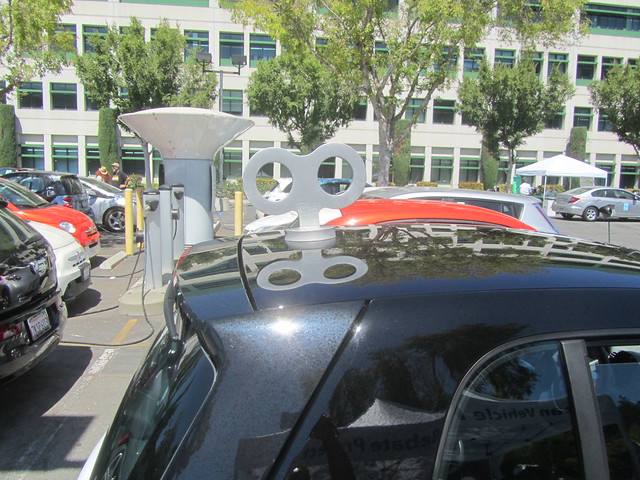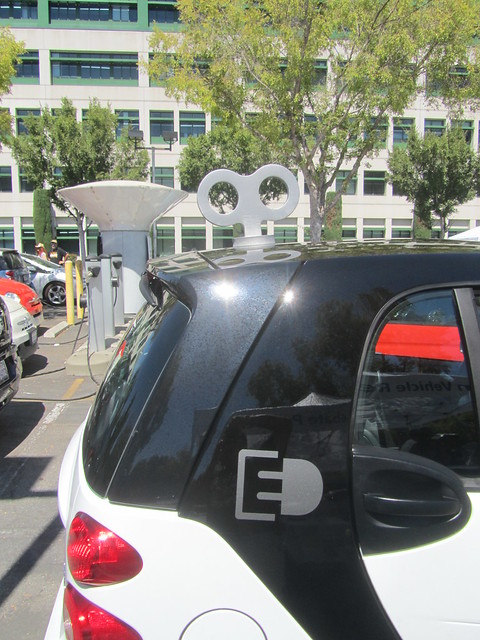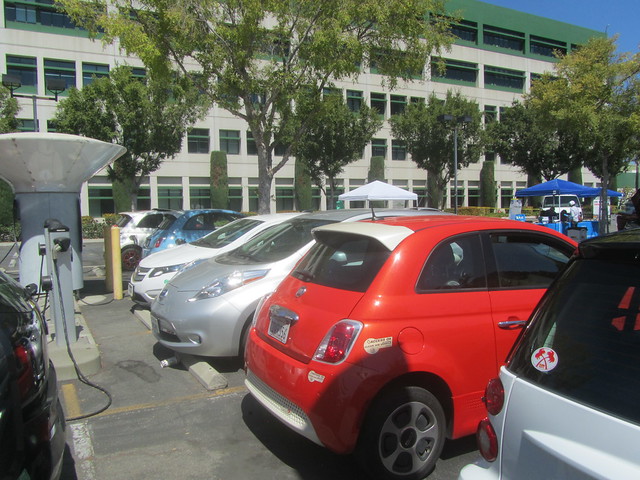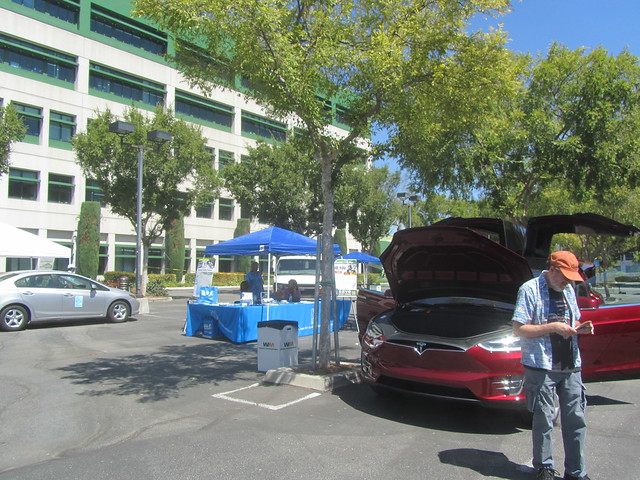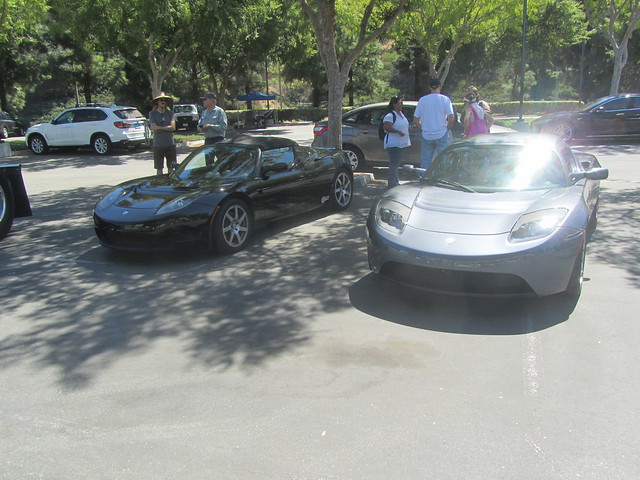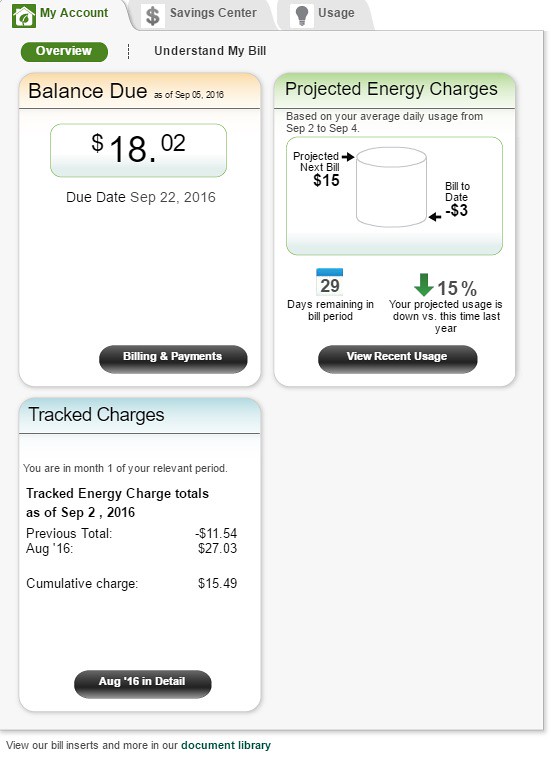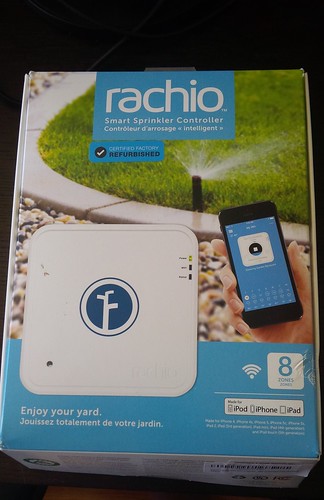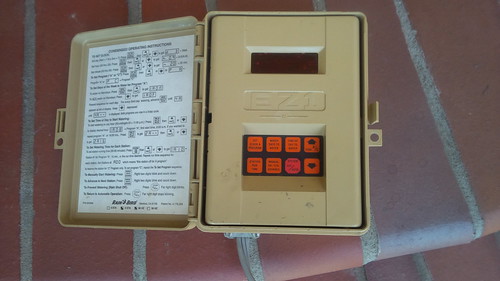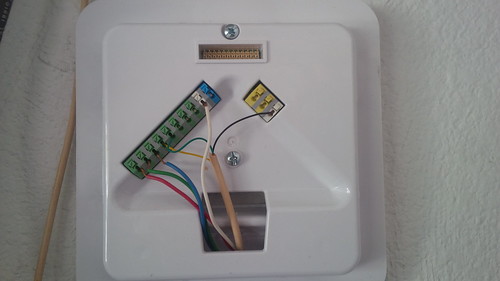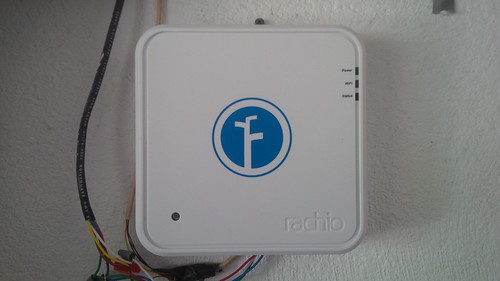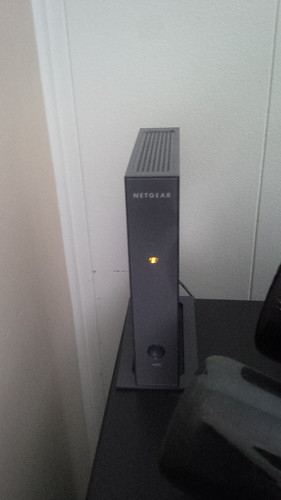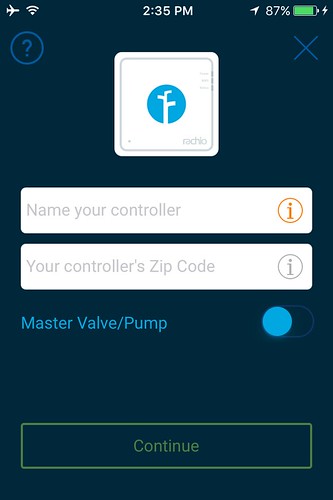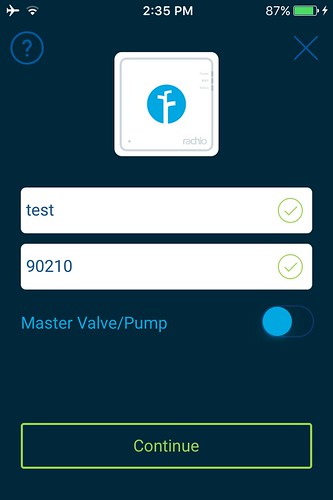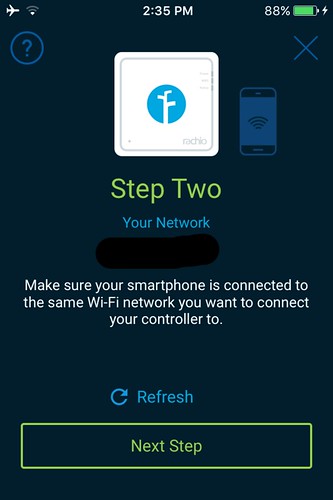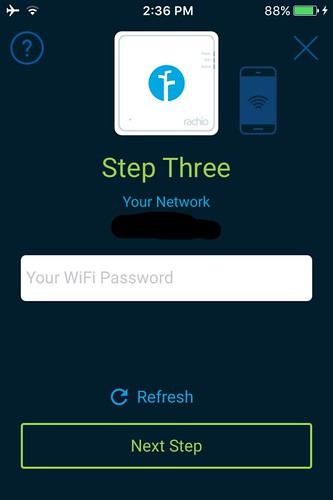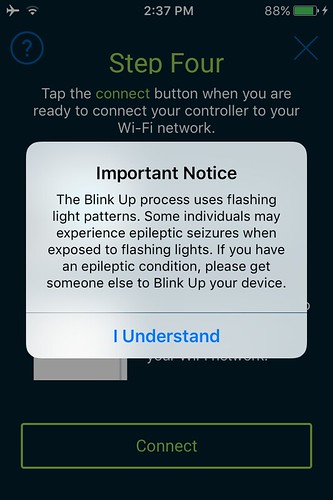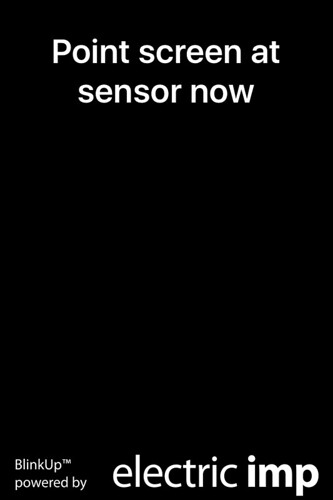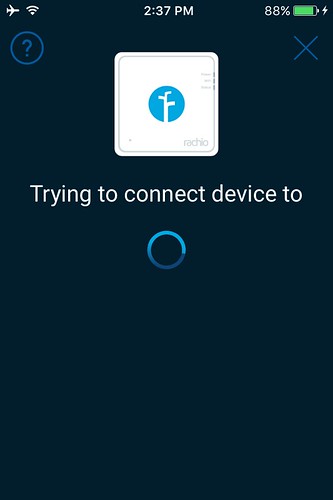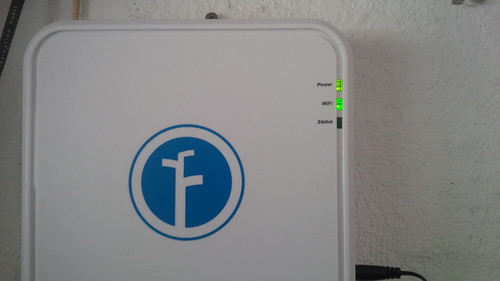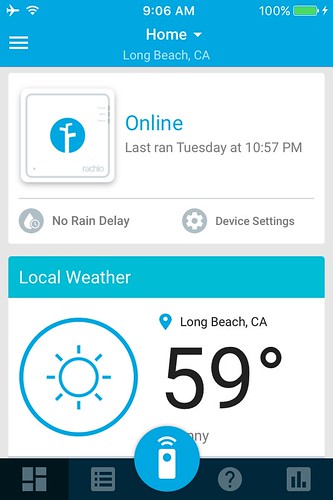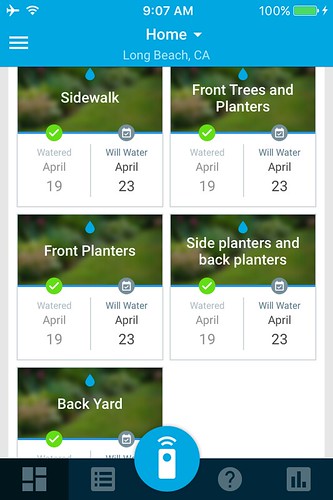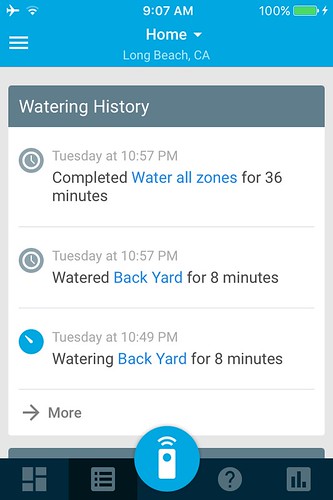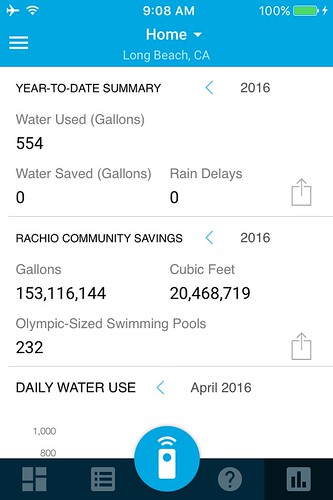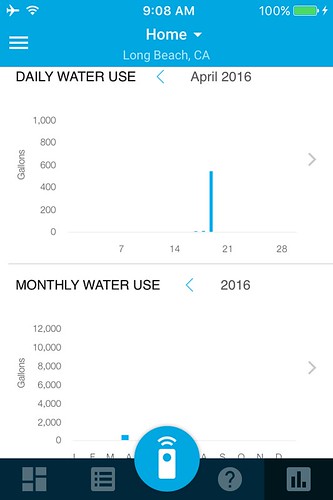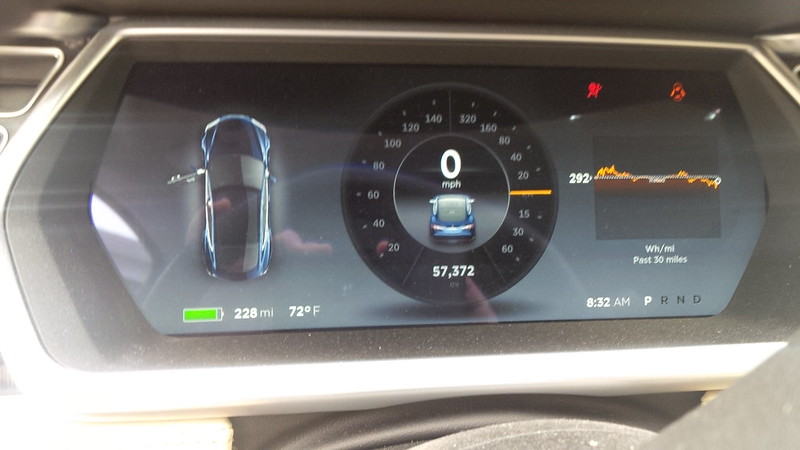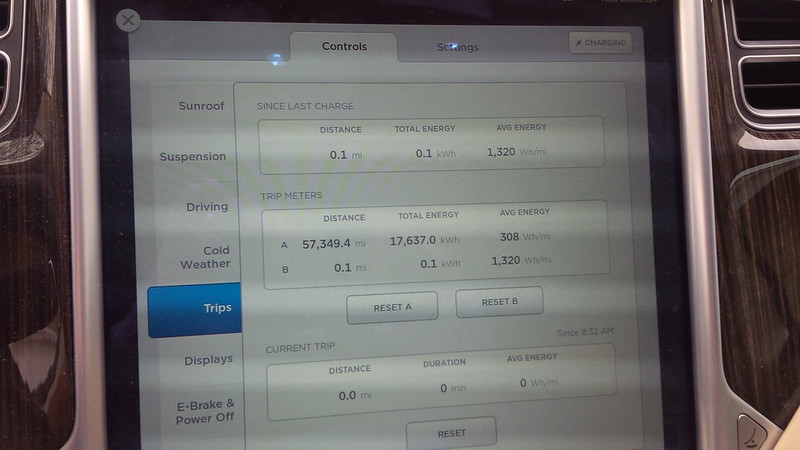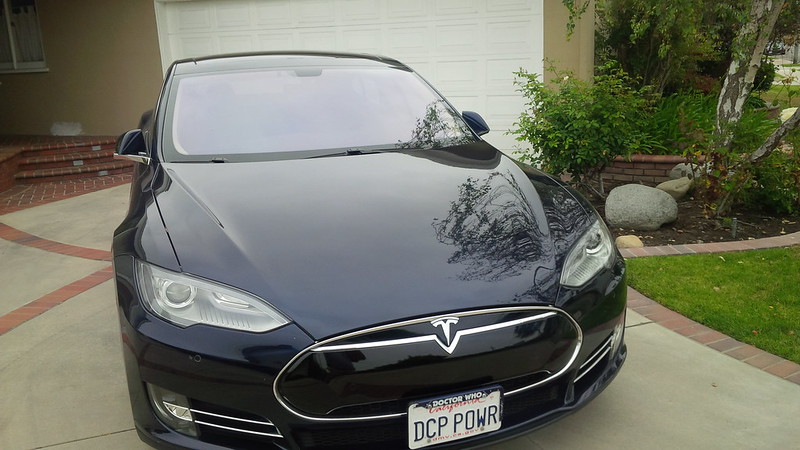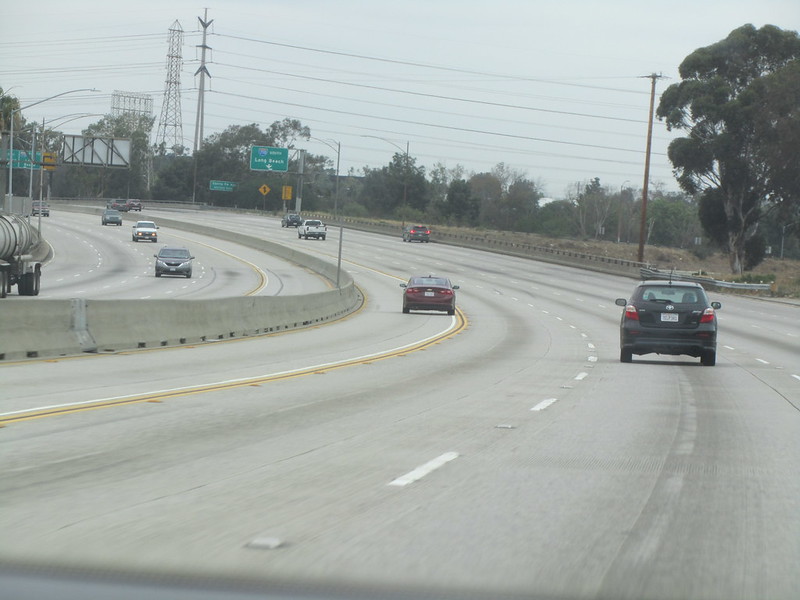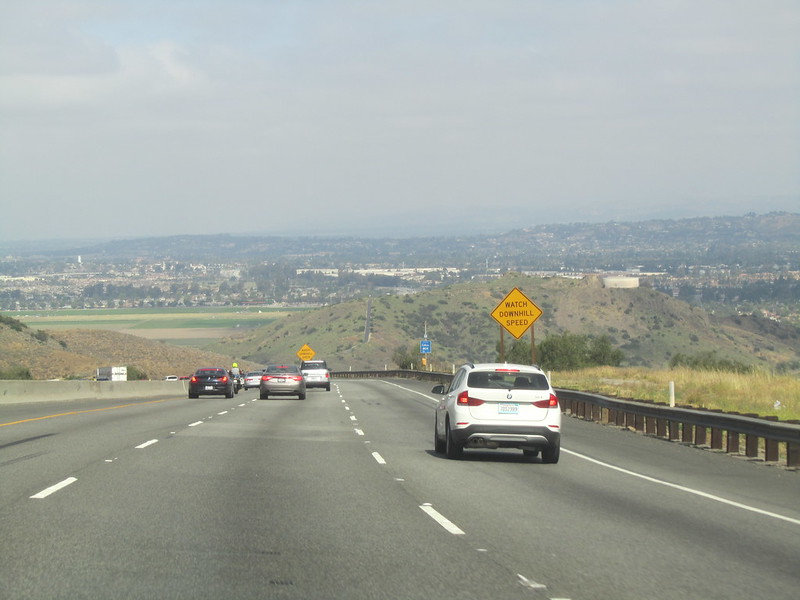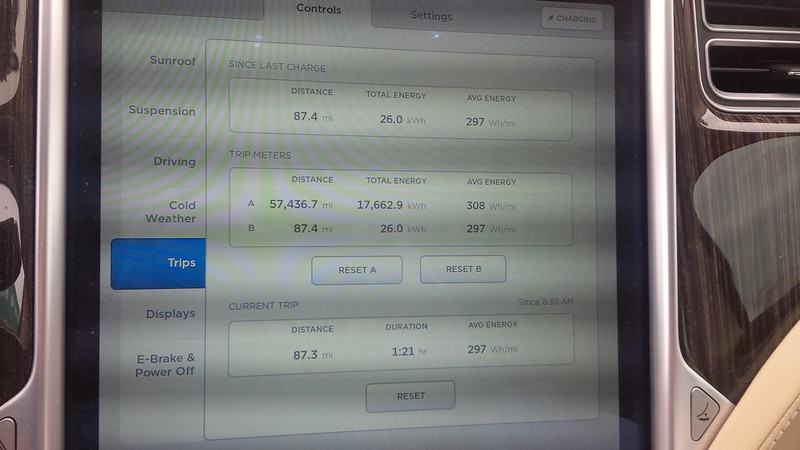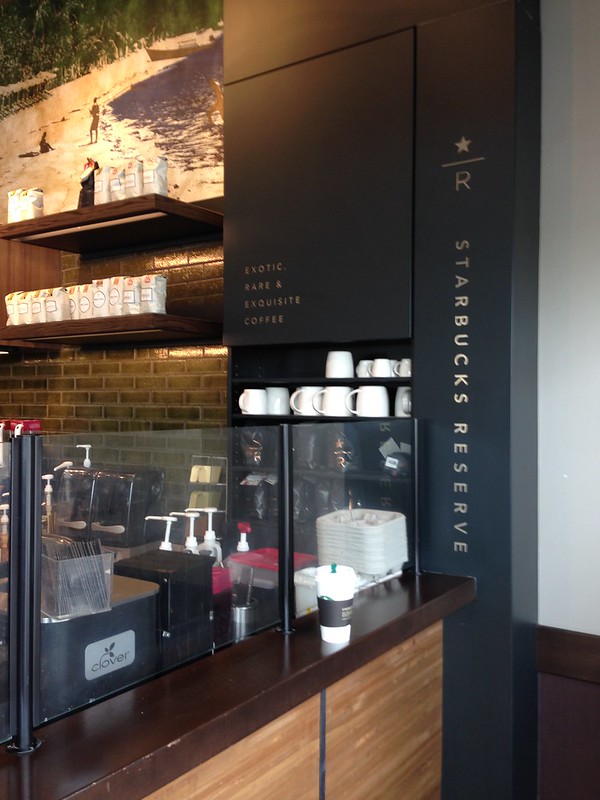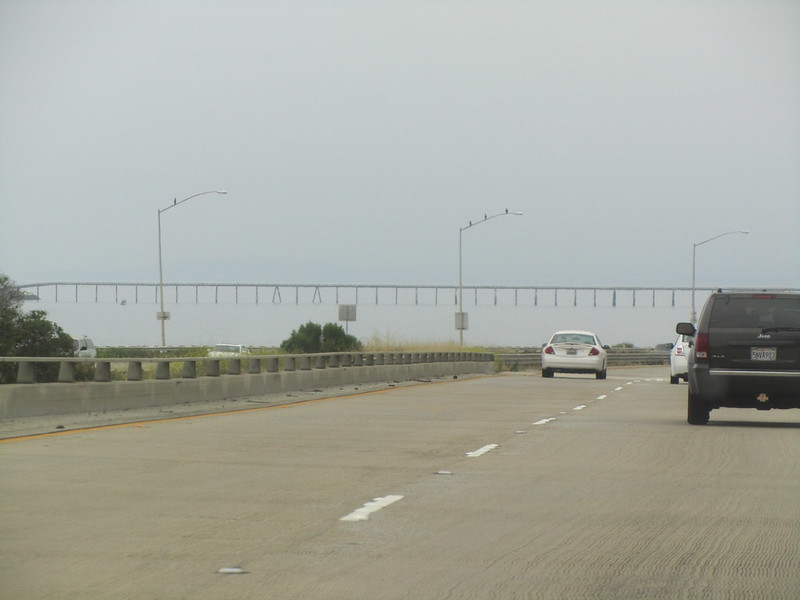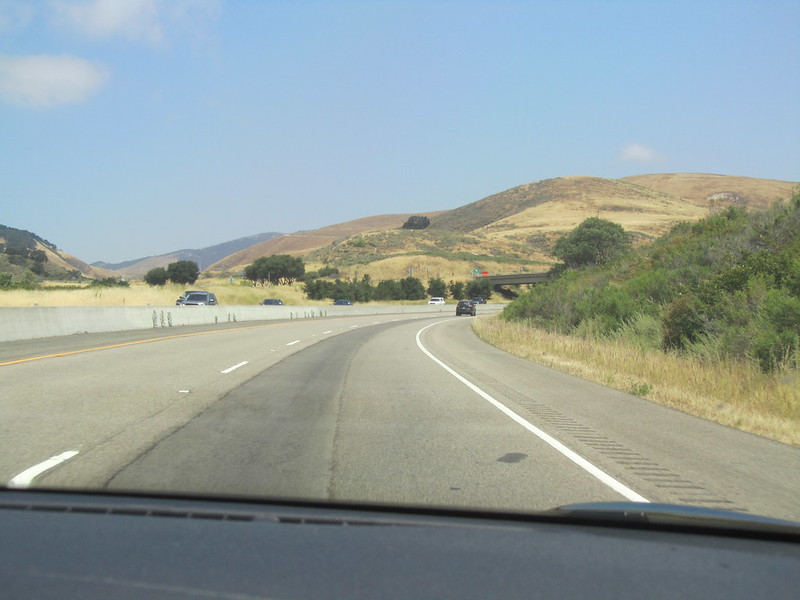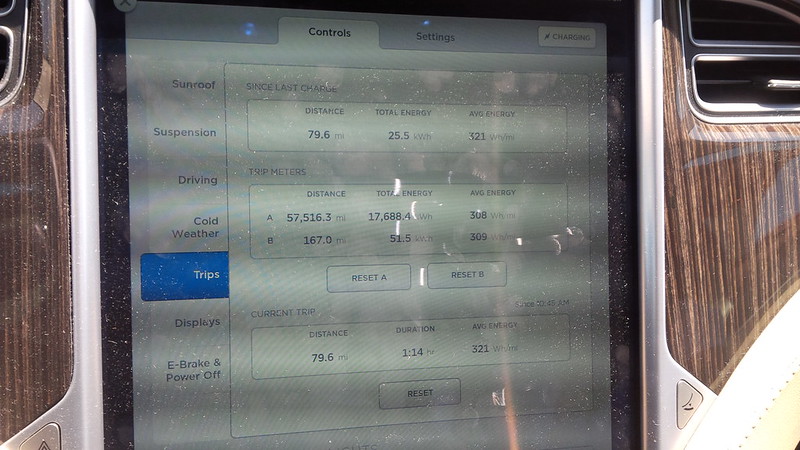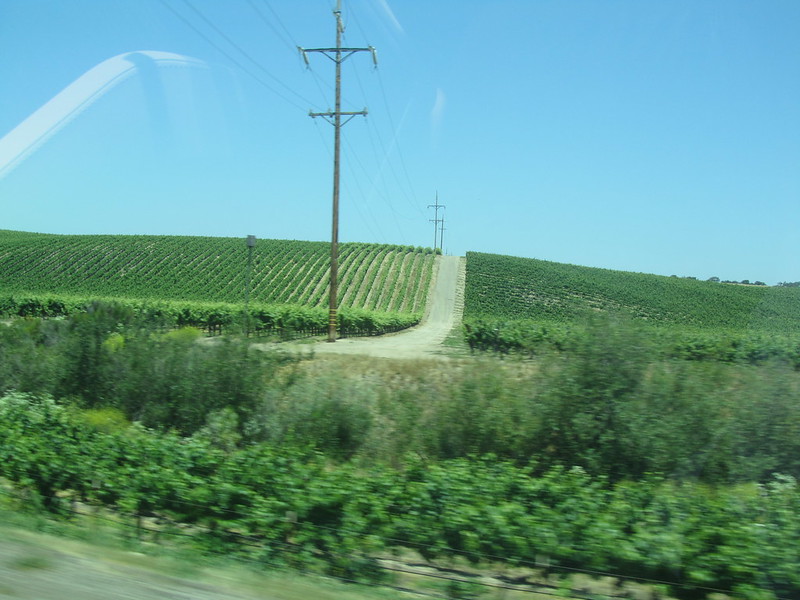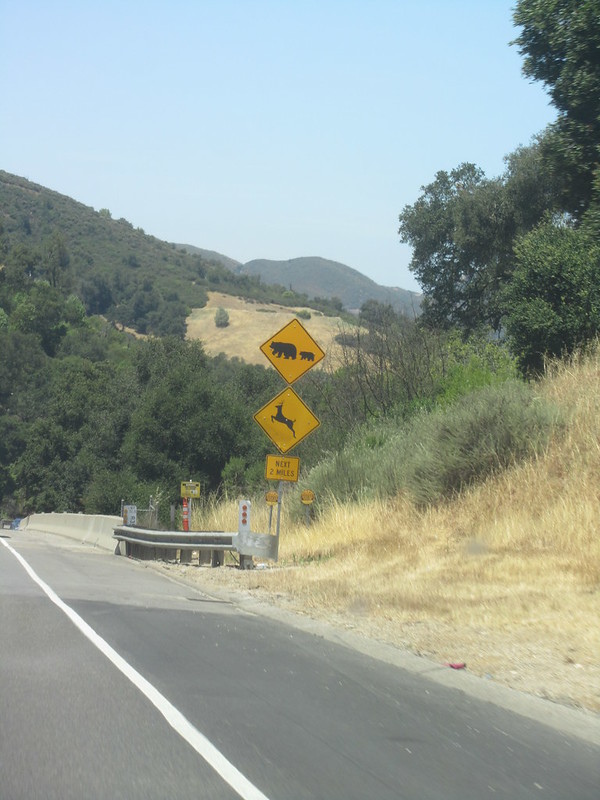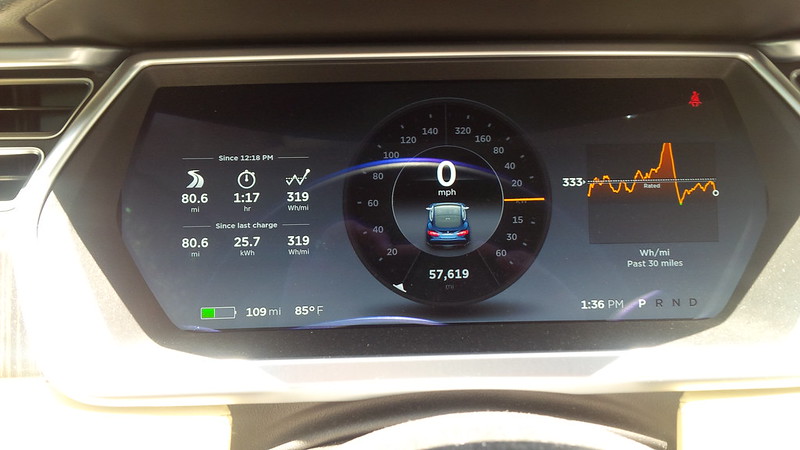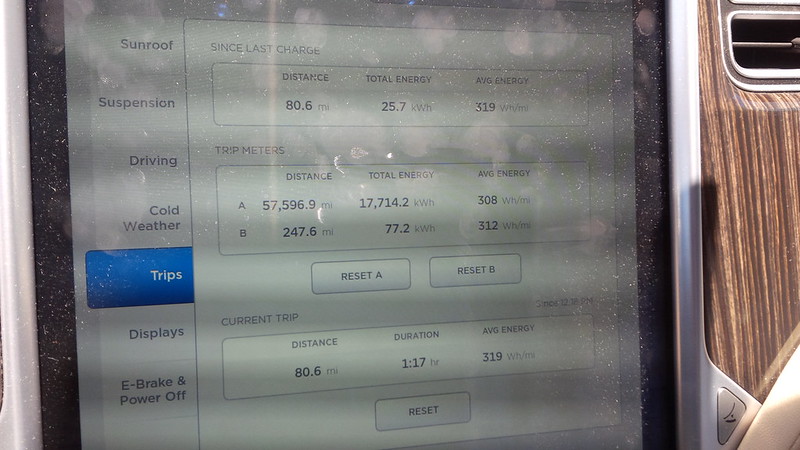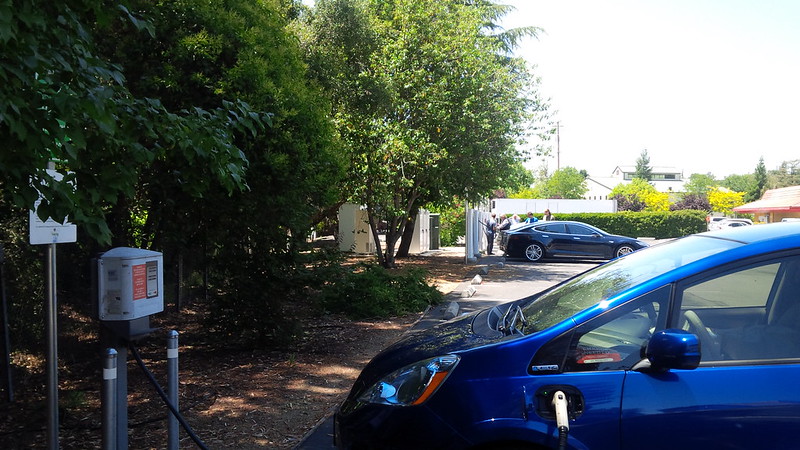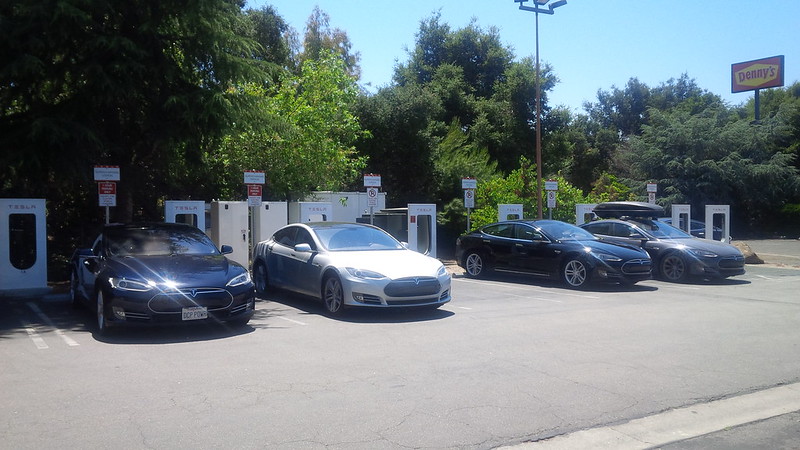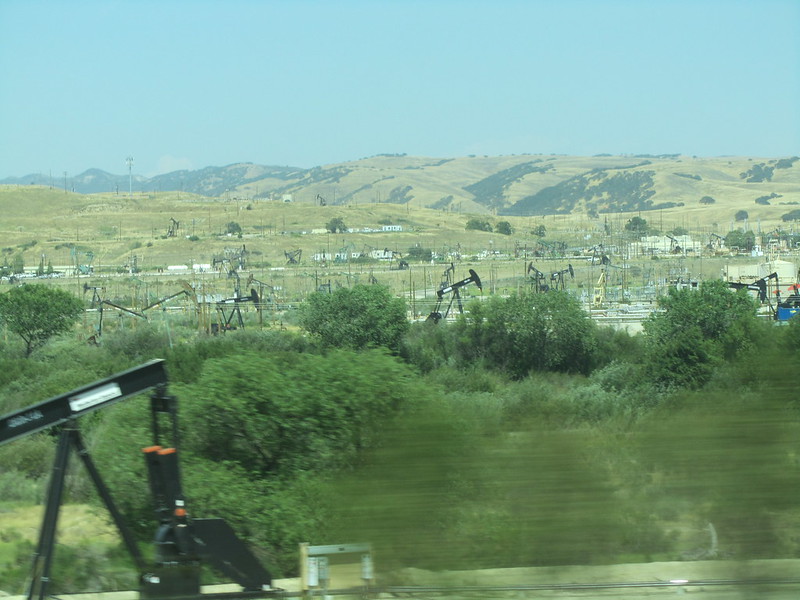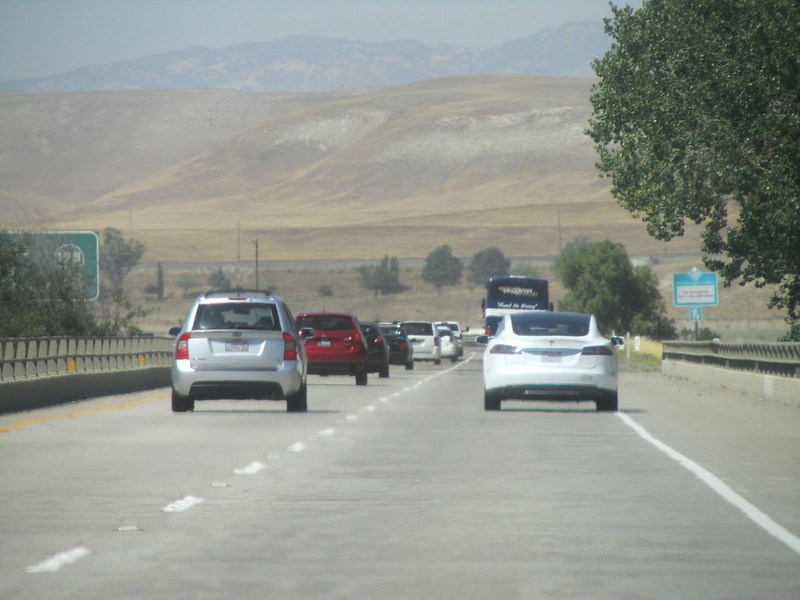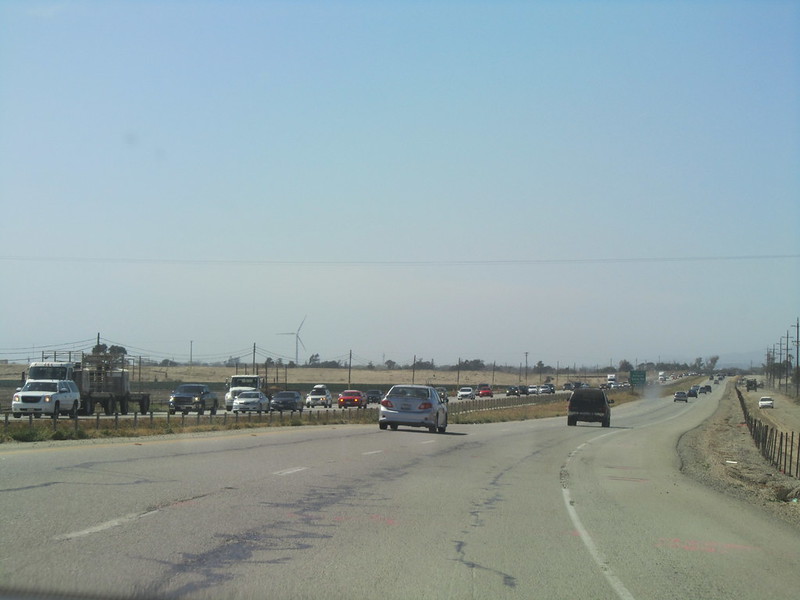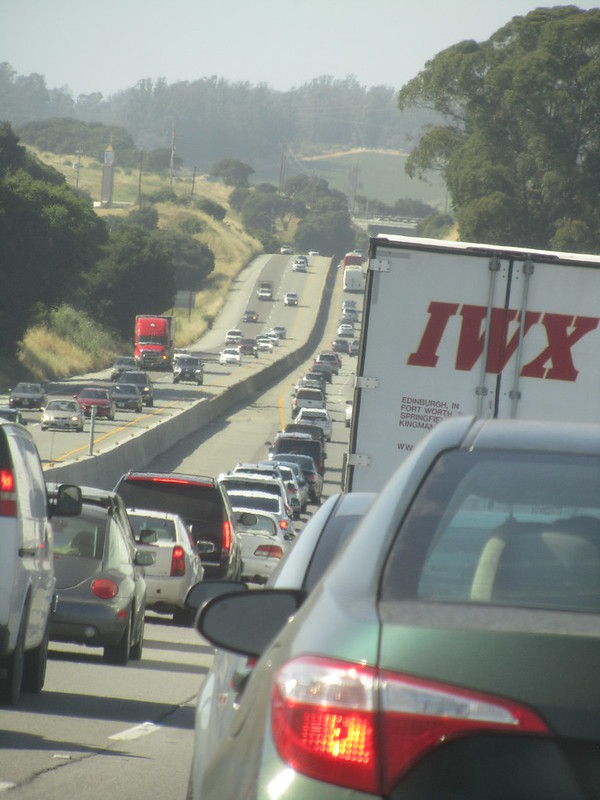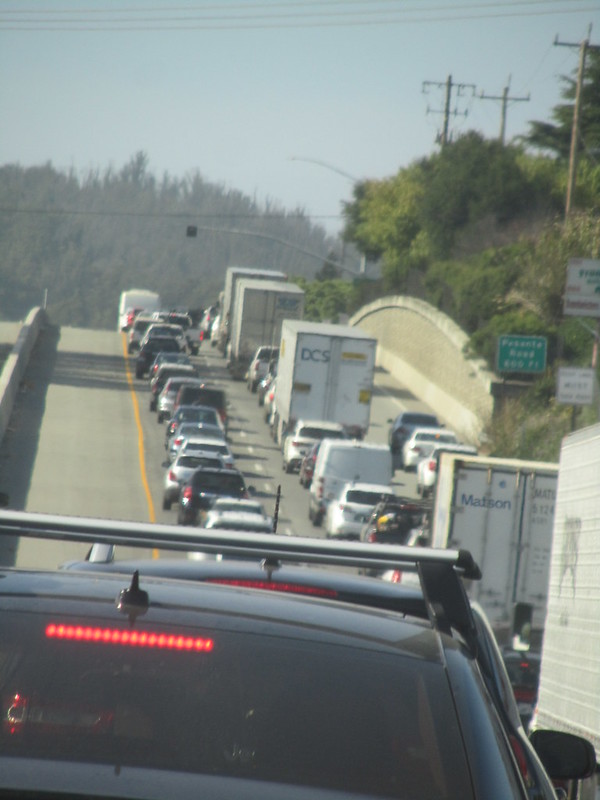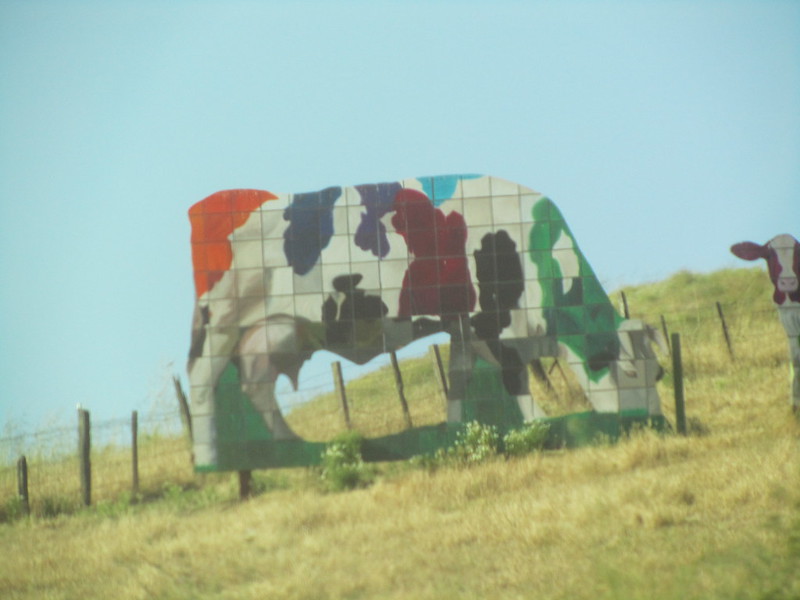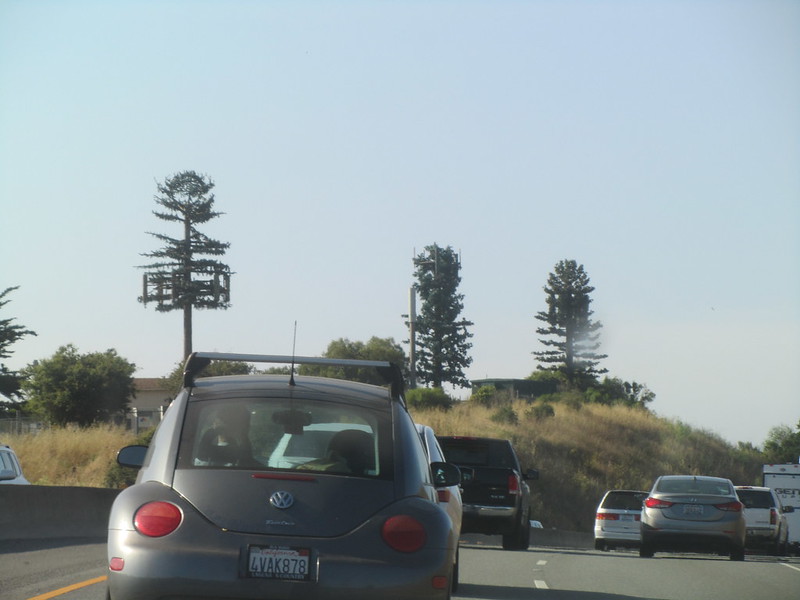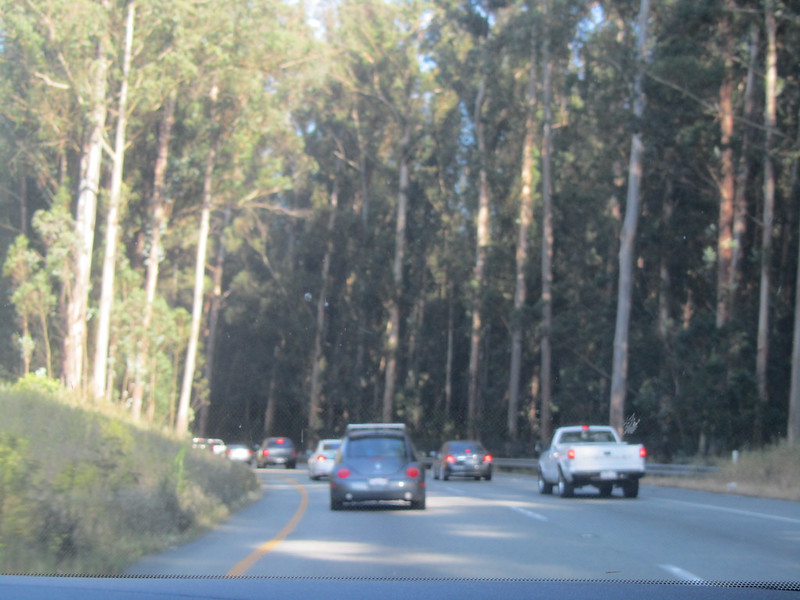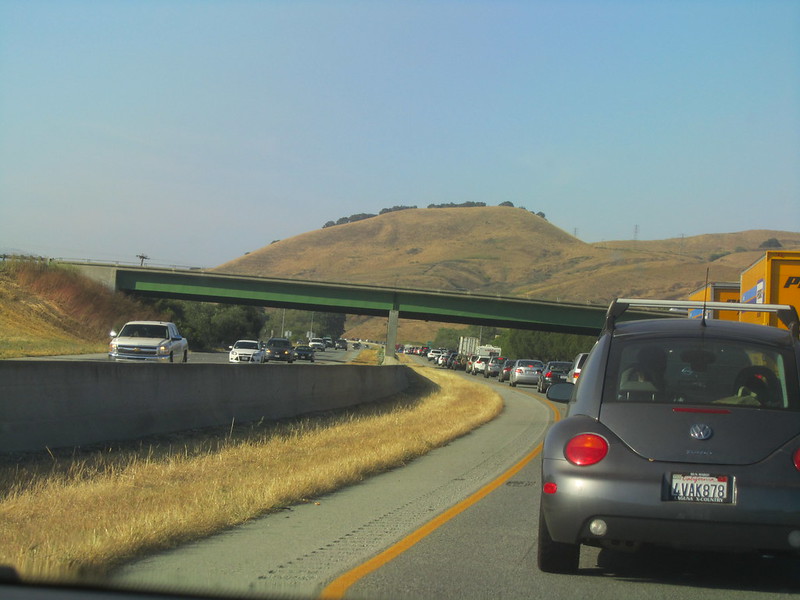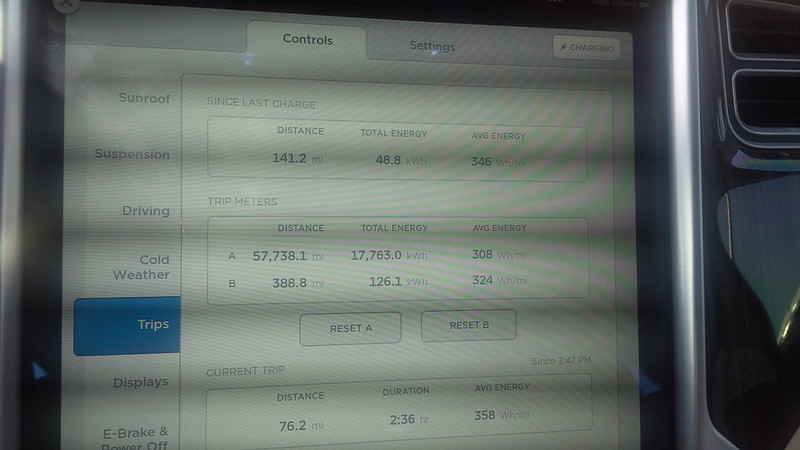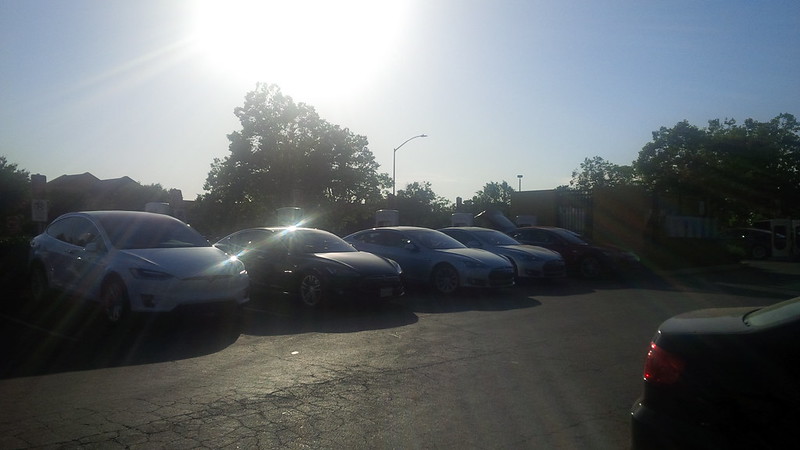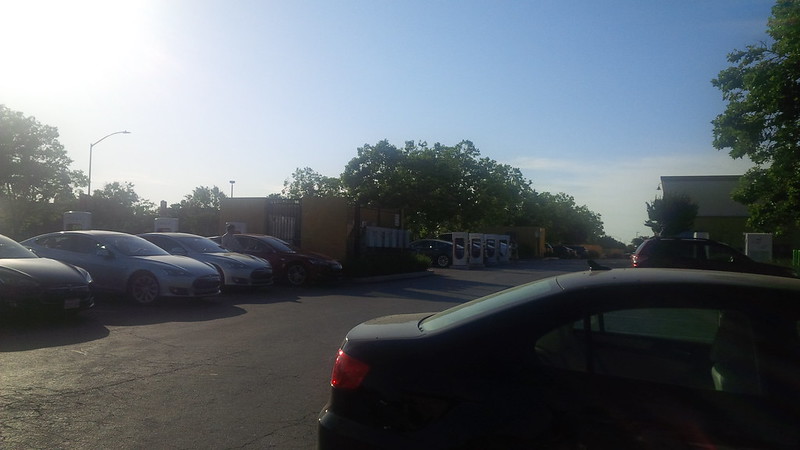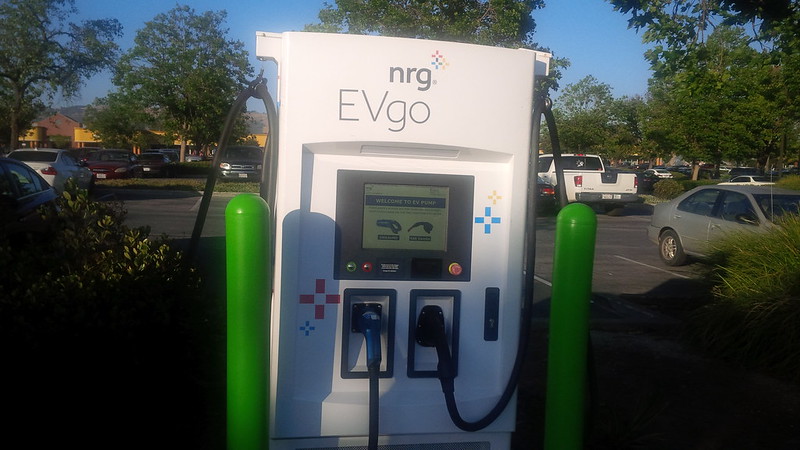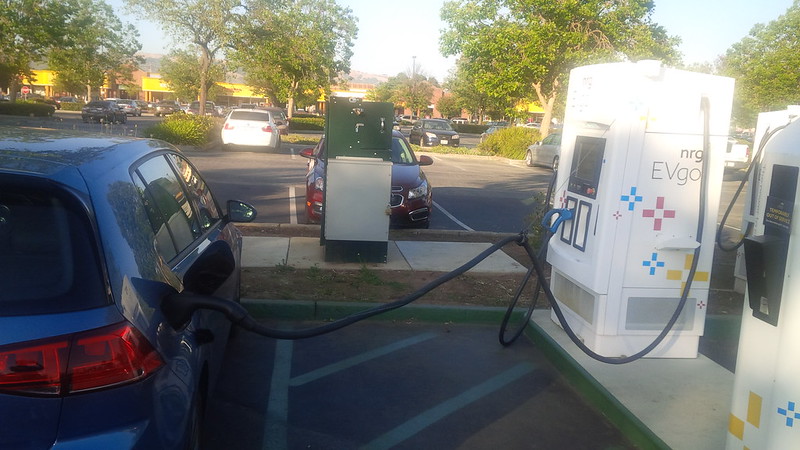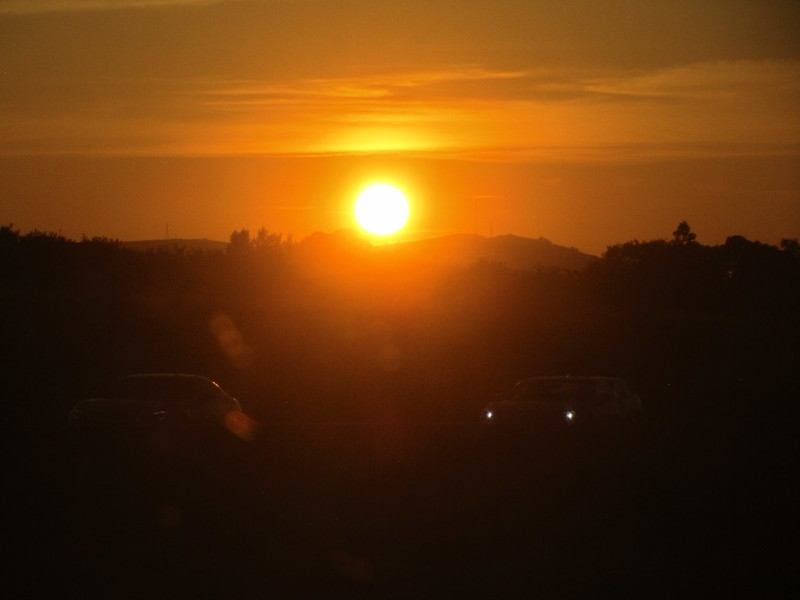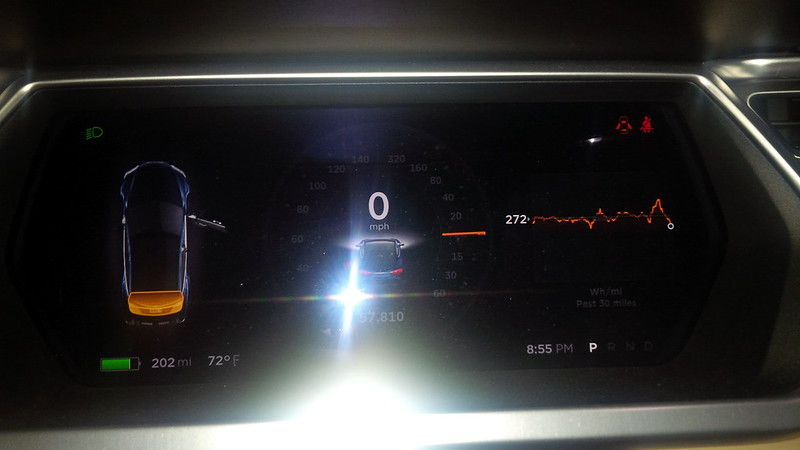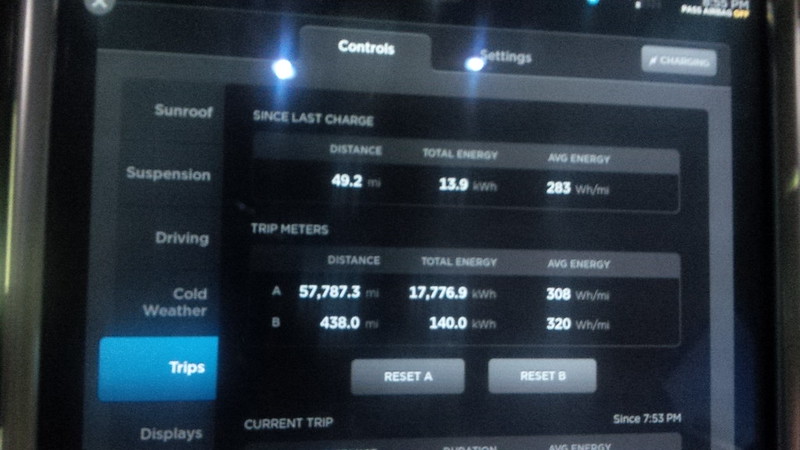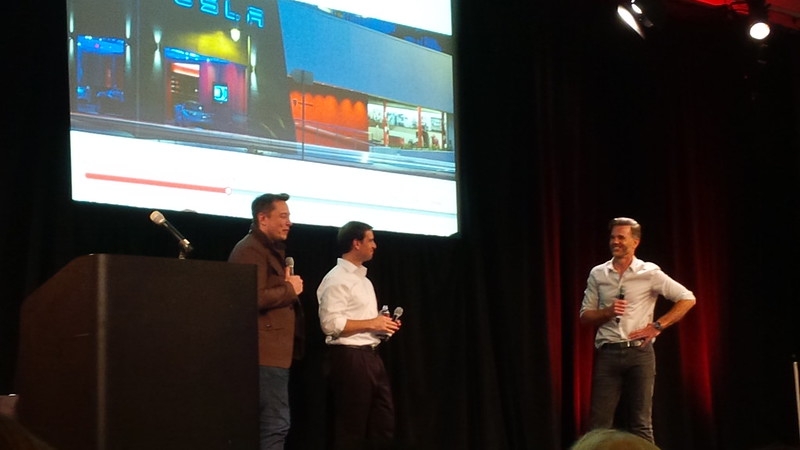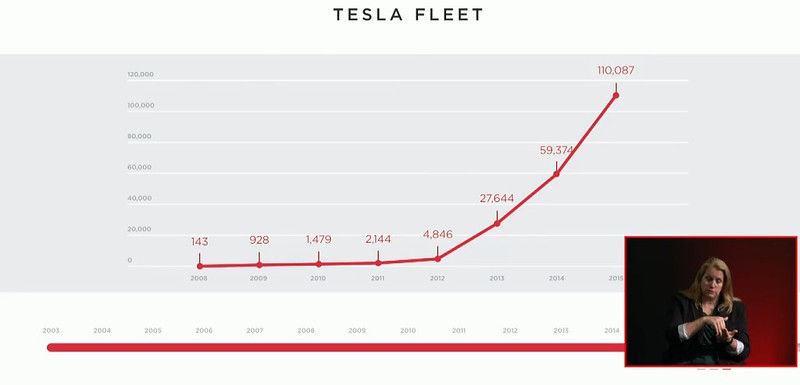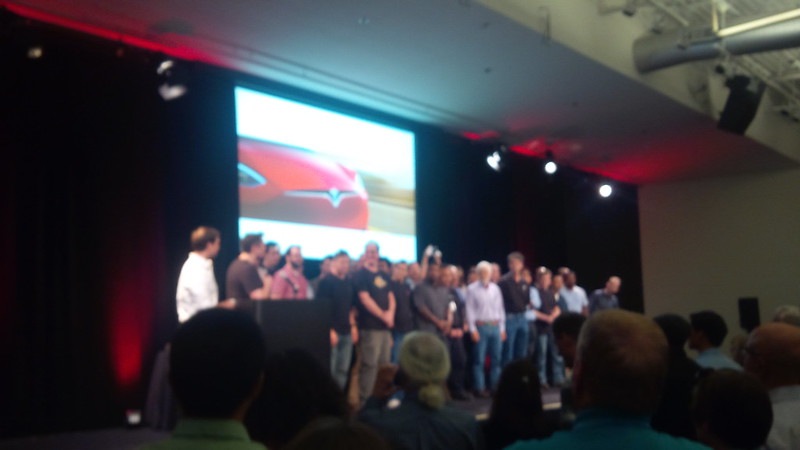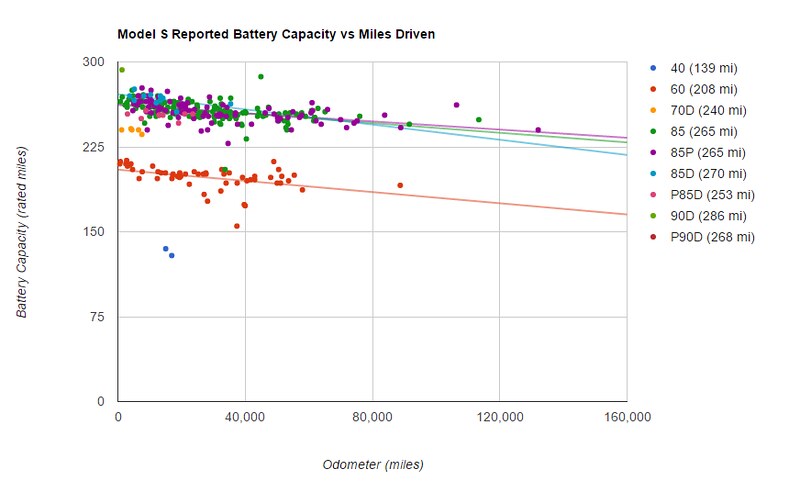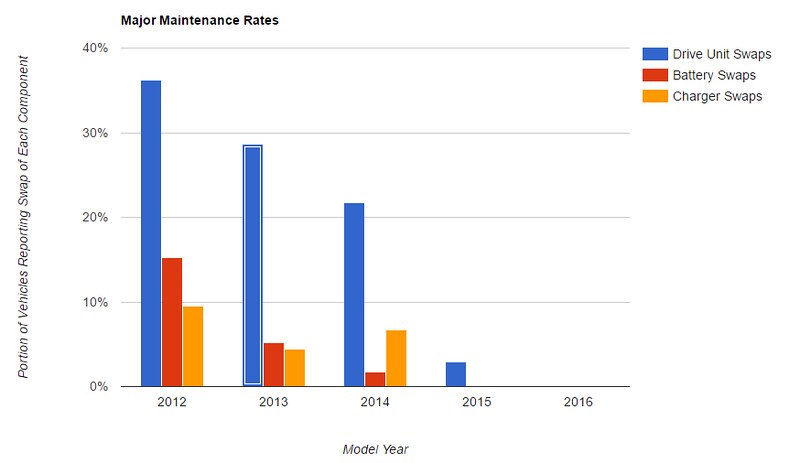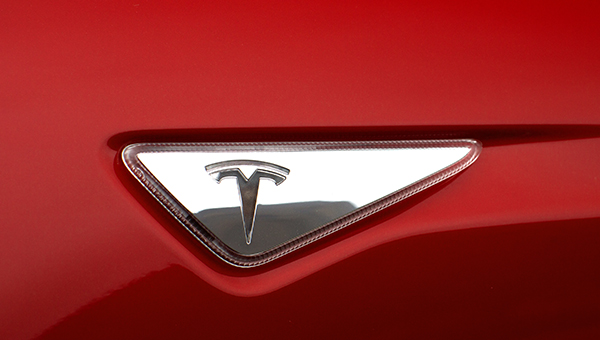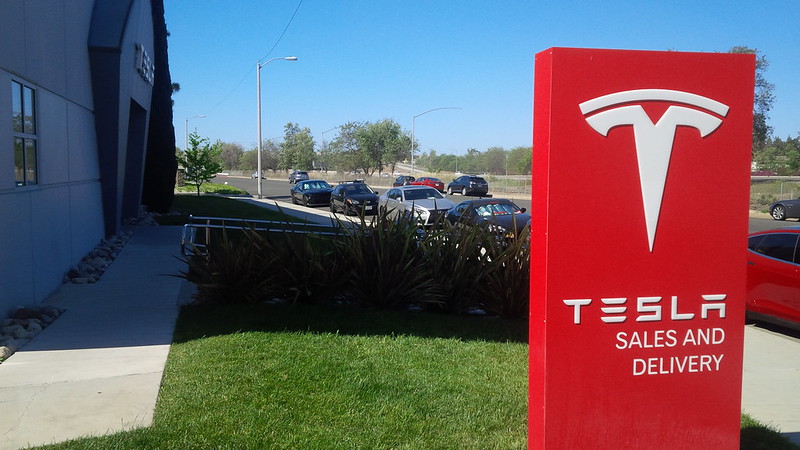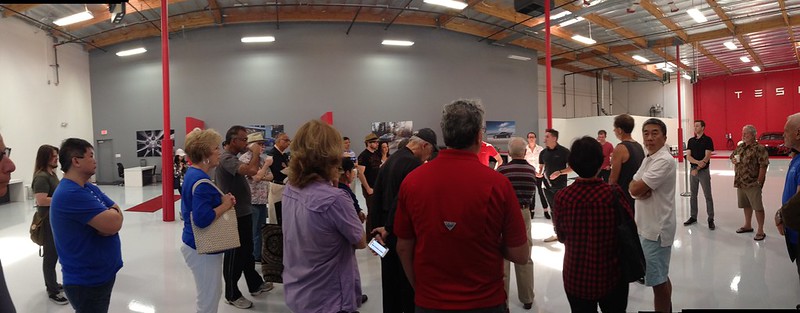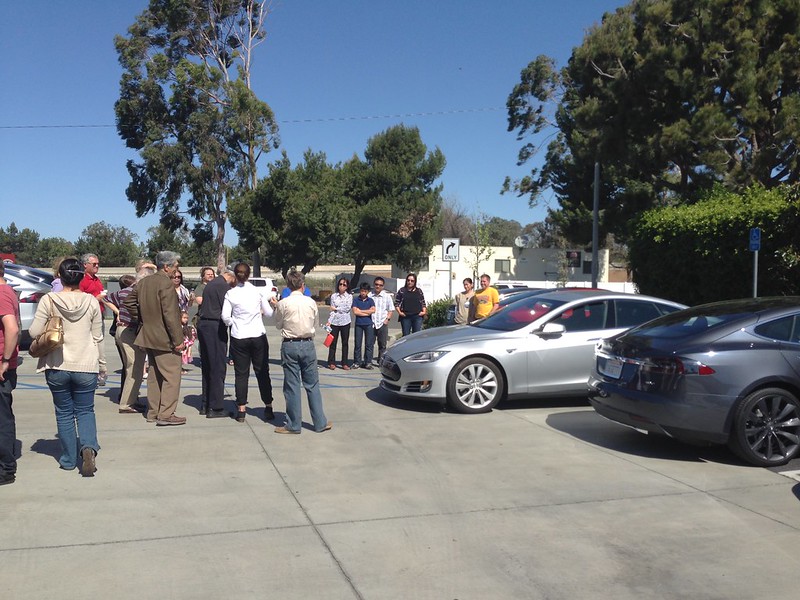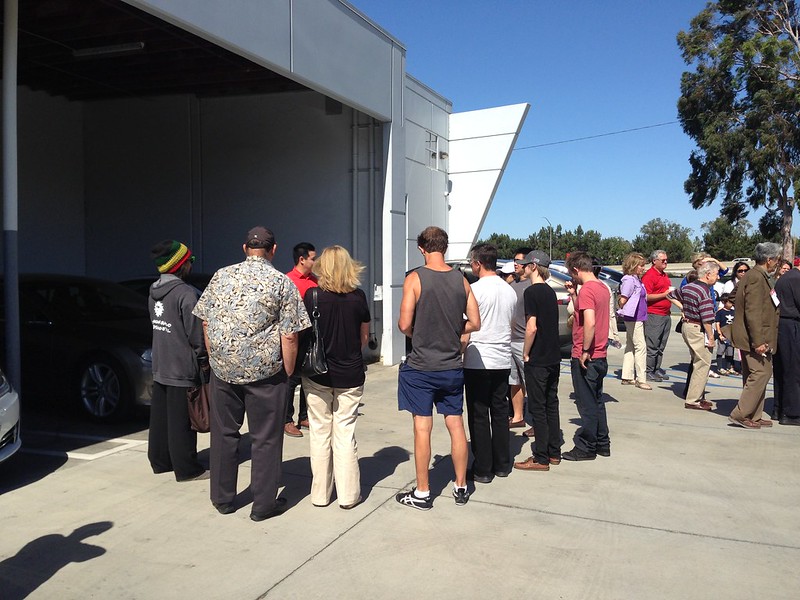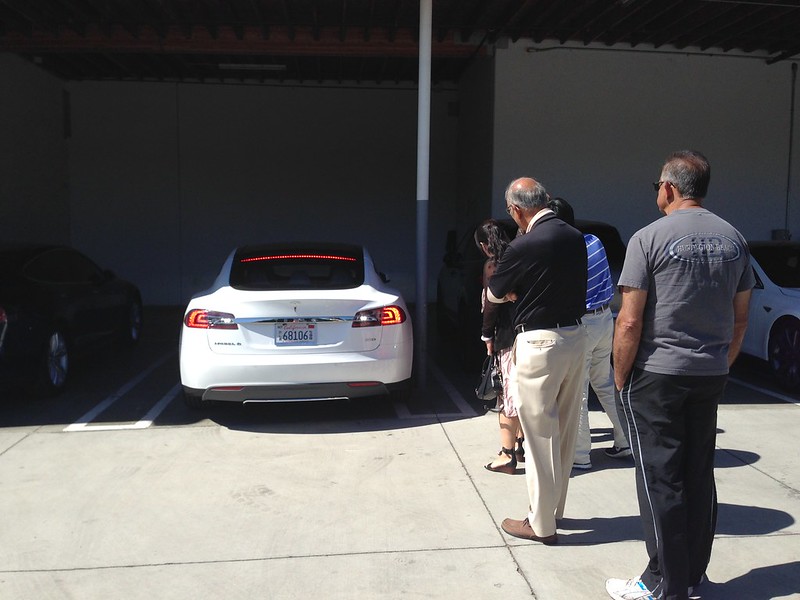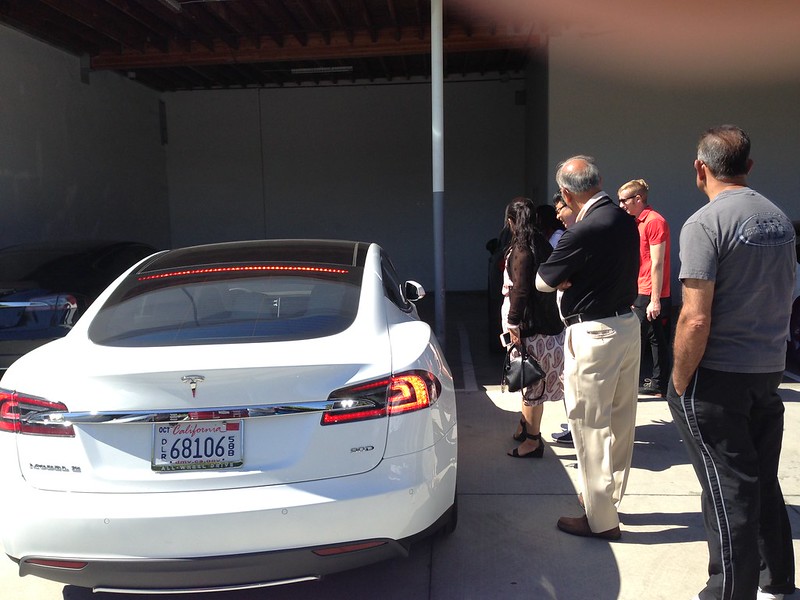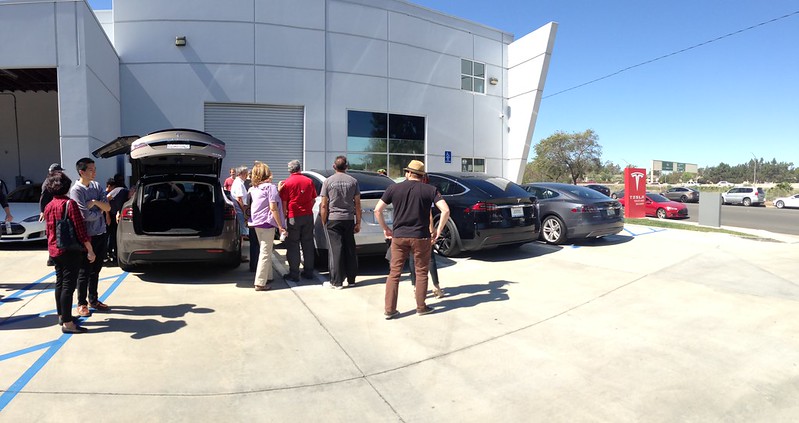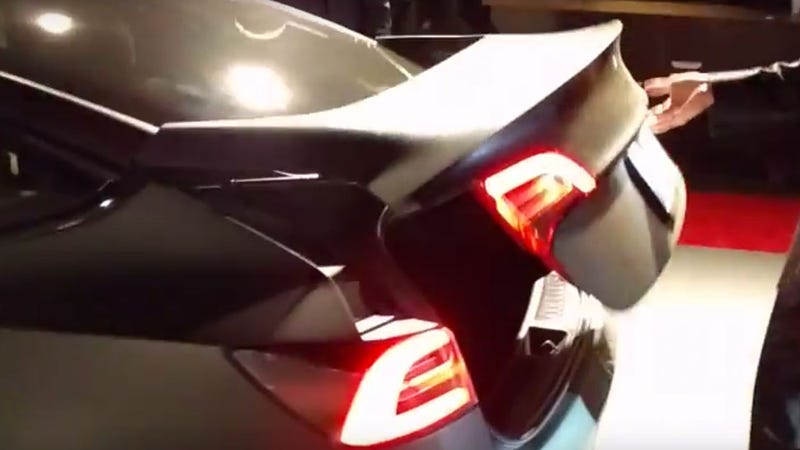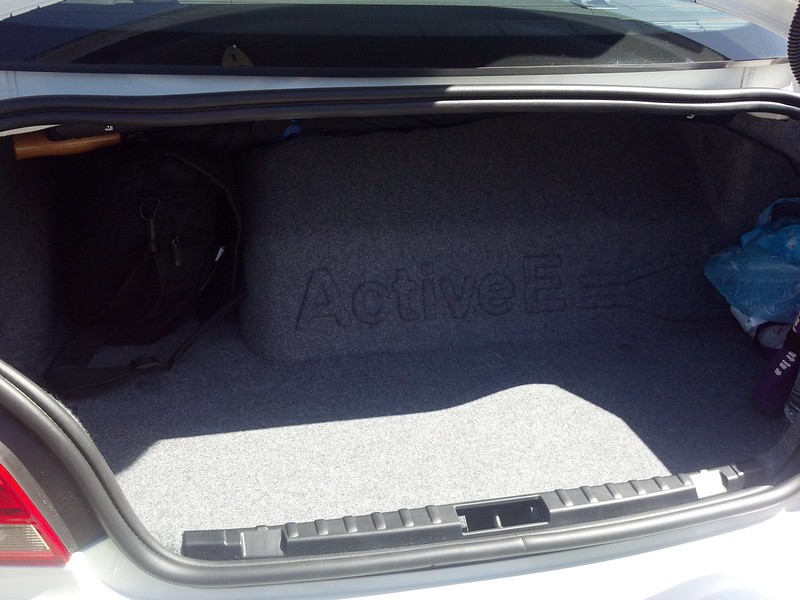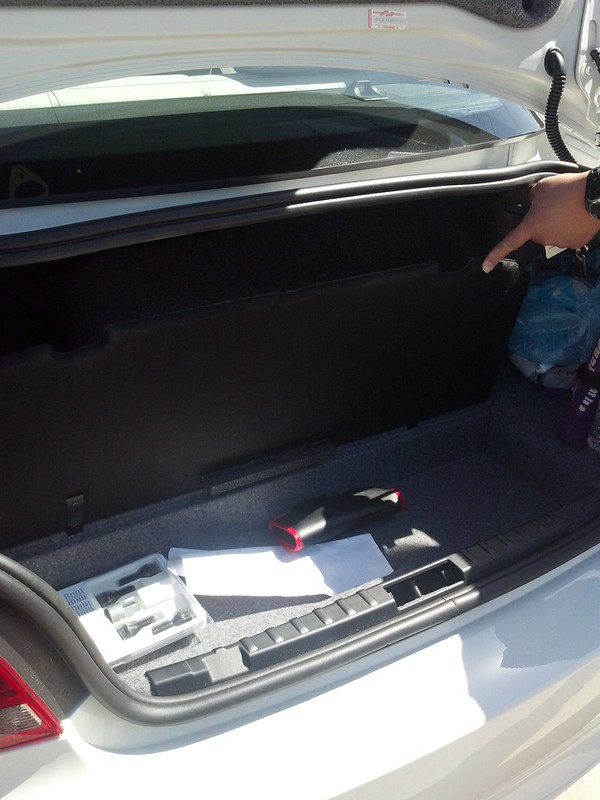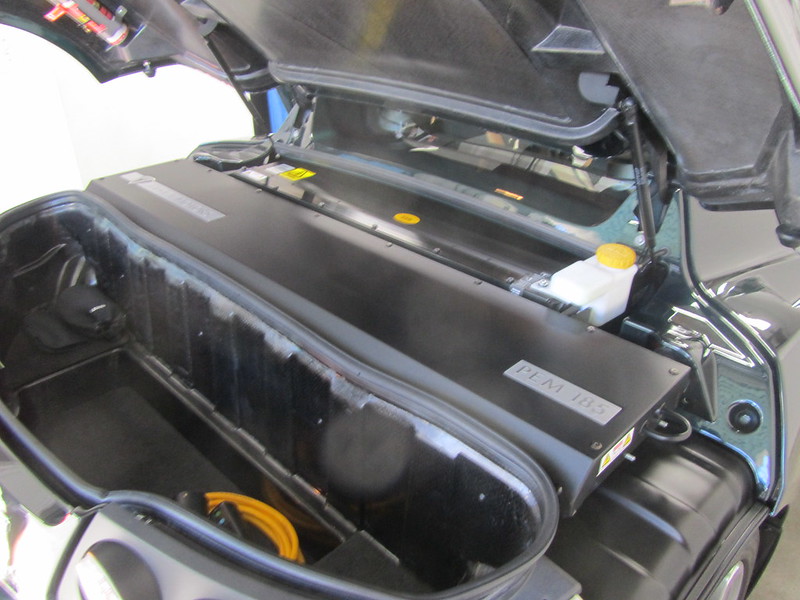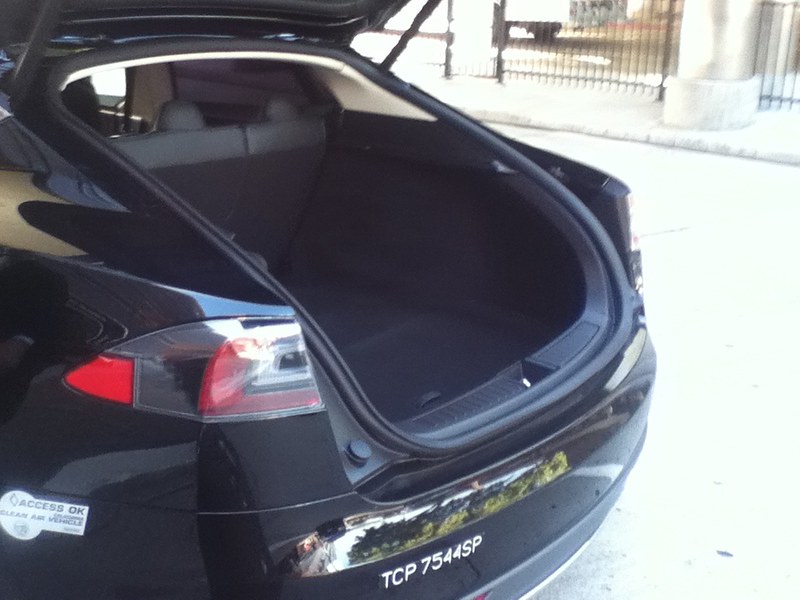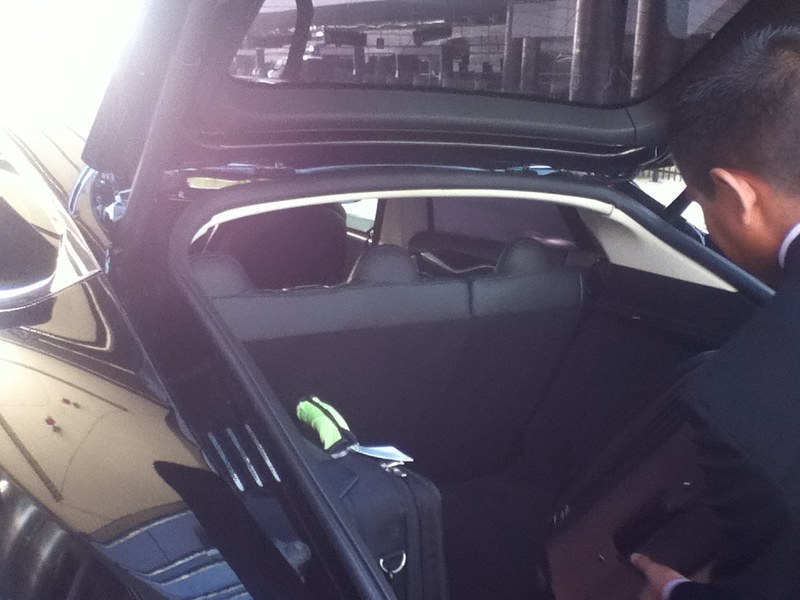Missed Day One? Here’s a link.
Looking for my thoughts and theories on the point to the long history lesson covered at the meeting. Here’s a link.
So, after a longer than normal drive with several hours in bumper to bumper traffic, we awoke from the second day of our trip refreshed and eager to get to the Tesla (NASDAQ: TSLA) annual meeting. As we’ve normally virtually attended these meetings in the past (here’s a link to the 2016 meeting,) we didn’t know what the processes and procedures were to attend. The meeting was scheduled on May 31, 2016, 2:00 PM Pacific, at the Computer History Museum located at 1401 N. Shoreline Blvd., Mountain View, CA 94043.
When we went checked in to the hotel on Day One, we had 202 miles of range left. More than enough to travel the few miles between our hotel and the meeting.
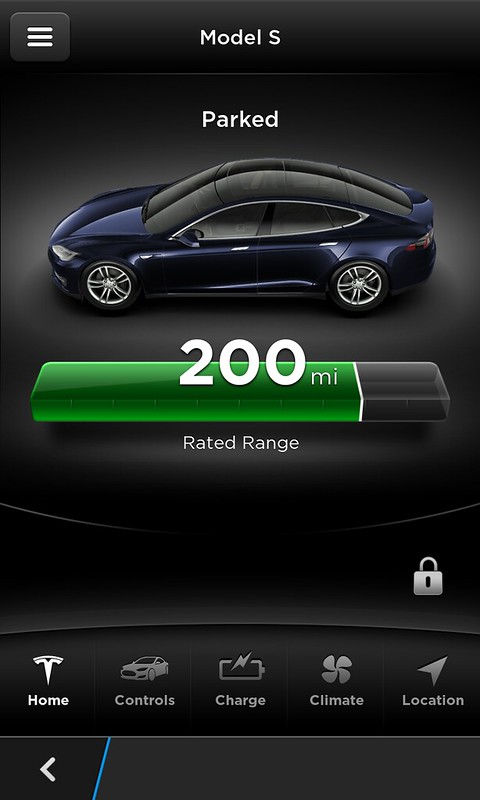
Based on our start of day statistics, it looks like we only lost two miles overnight and the distance between Gilroy and our hotel was fairly close.

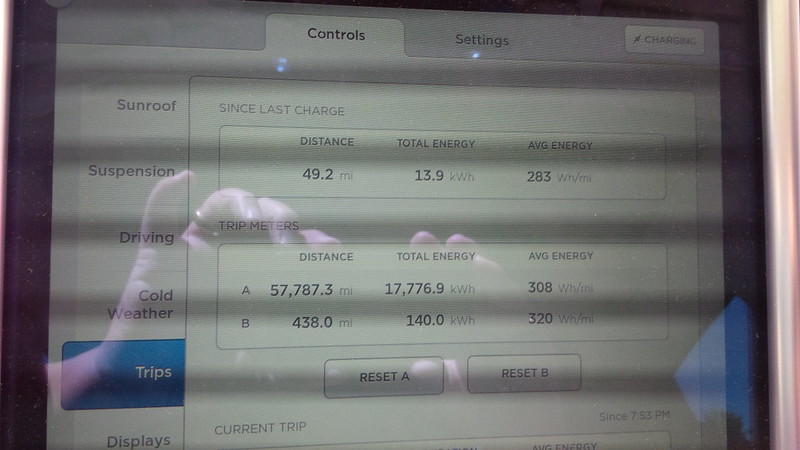
We wanted to give ourselves the option of skipping Gilroy on the drive home. So we knew that we wanted to be “near maximum” when we leave on our drive back to Atascadero or to Harris Ranch as we haven’t decided our Southbound route yet. If we were to leave the Annual Meeting fairly early in the day, we contemplated the same route that we drove Northbound. However, at this point in our journey, we didn’t know what we were in for at the annual meeting.
We had originally planned on getting to the Computer History Museum for the meeting by 1pm. However, our fellow Tesla Owners Club of Orange County (OC Tesla (meetup group and our group page on TMC) members that we caught up with at Gilroy the previous day provided us with some hints as they’ve been driving to the meetings for years. We had planned to meet up with them in line for the meeting, and sit with them inside. They were planning on charging and then having an early lunch at an Italian place nearby, the same restaurant that folks at TMC planned on having a meetup after the meeting.
We played it by ear and arrived at a fairly empty Mountain View Supercharger at the Computer History Museum, so we plugged in to give us maximum options on our route after the meeting.
Mountain View Supercharger – Computer History Museum
We visited the Mountain View Supercharger for the first time during our insane round trip 22 hour drive to Silicon Valley and back. This same supercharger was launched at the 2015 Annual Meeting and what made it significant was this was the first liquid cooled supercharger and had the thinner cables.
Here are the pictures that I took last year to show the difference in cables:
The first two pictures are of the supercharger at Mountain View.

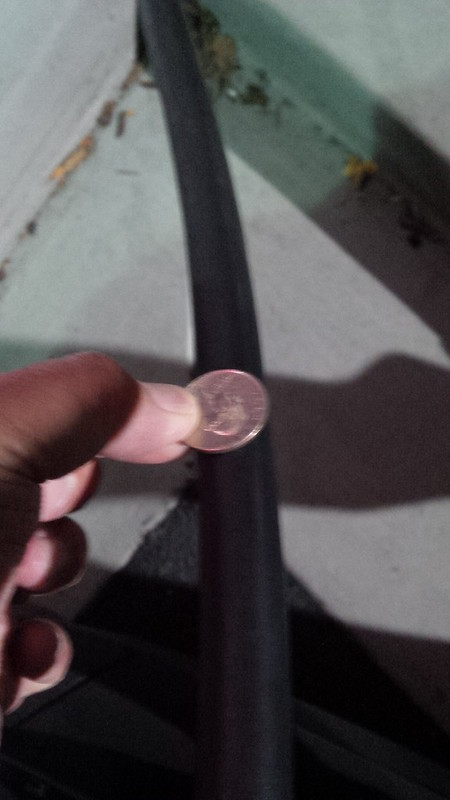
and these are the standard ones at Harris Ranch that I used to compare them to.


I took pictures of our statistics from the hotel to Mountain View Supercharger.


And figured to fill it up so that we can be close to 90% when we roll off. I wanted to charge the car enough to run the preconditioning intermittently as it was a hot day and the car was unplugged. The stalls were relatively empty for the area (meaning there were at least two stalls available at all times.)
We went to line up for the meeting and joined our friends from the OC Tesla Club around 12:15 PM for the 2:00 PM meeting. I estimated our place in line to be 30-40. Since our wait for the Model 3 was in the slowest line ever and took five hours, waiting almost two hours for the start of the annual meeting would be a piece of cake.
We had good company and we spent the time chatting about Tesla and other things with our friends.
In the parking lot directly in front of the line were two Teslas with the current design aesthetic. I was hoping for a Model 3 to be at the meeting, but none were there.
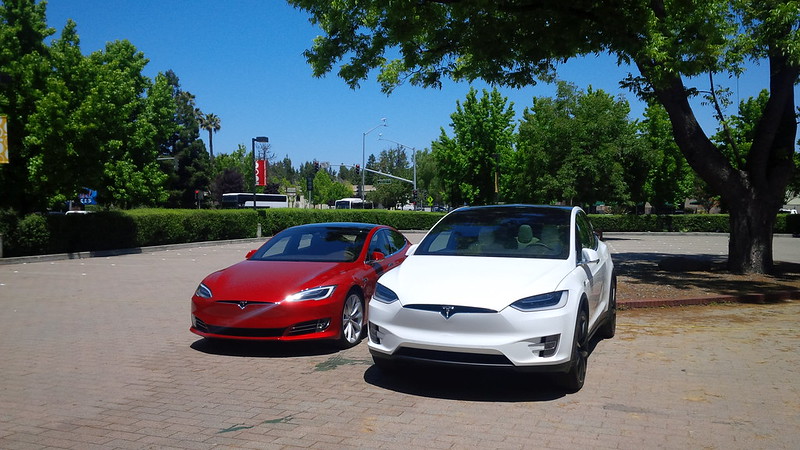
Still, the new fascia on the Model S does grow on me.
I don’t remember what time they had us go into the building, but I suspect it was around 1:00 PM, if not 1:15 PM. I took the photo of the display with the welcome to Tesla Annual Meeting around 1:25 PM and that’s after we’ve been in for a little while.
The process of checking in was quite orderly.
The Tesla employees checking in attendees required proof of Stock ownership for the relevant period, so if one had the proxy to vote their shares with them and/or holdings statement for the shares for the relevant period then they let you in.
There were two stamps that they used to identify people. One for shareholders (which got you into the room for the meeting) and another for guests (which got you to a different room that looked like it had a closed circuit feed of the shareholder room.)
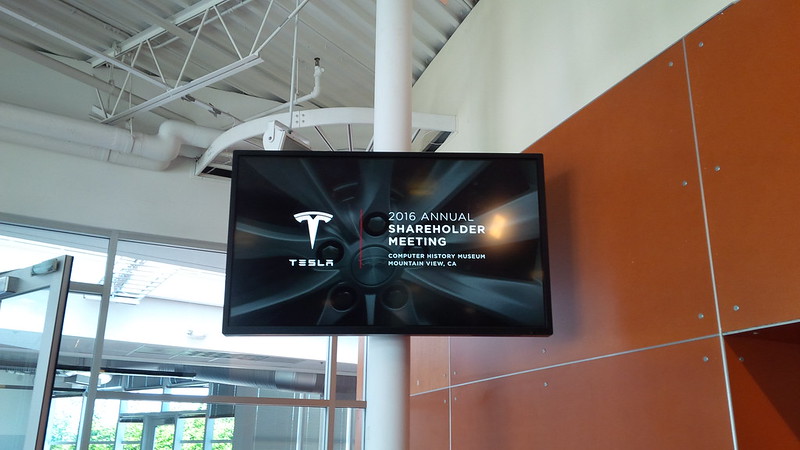
We both had stamps to get into the shareholder room and proceeded there. We took a seat on the left side four rows from the front. The “best seats” up front and center was reserved for the board members, but the rest of the room was pretty much “first come first serve”. We were glad to get there with early with our friends because the room filled up quickly and we had a great view of the meeting.
Here’s what it looked like when it was still relatively early:

I grabbed a physical copy of the Annual Report and ballots so that we can vote our holdings. One of the things I don’t normally carry with me is a pen. Luckily my wife carries one in her purse because voting at the Annual Meeting actually requires a pen to fill out the ballot. I know, so wasteful with all the paper, but give us a break. It’s how it’s done.

I was a little “shy” to take pictures of the early parts of the meeting because the procedures to the meeting emphasized a “no recordings” line and the like. However, everyone else was snapping away. So, I ended up taking pictures at the meeting with my phone. (Yes, I know, peer pressure! 😉 If my friends jumped off the cliff, I might just follow them. 🙂 )
Here is Elon and JB talking about AC Propulsion:
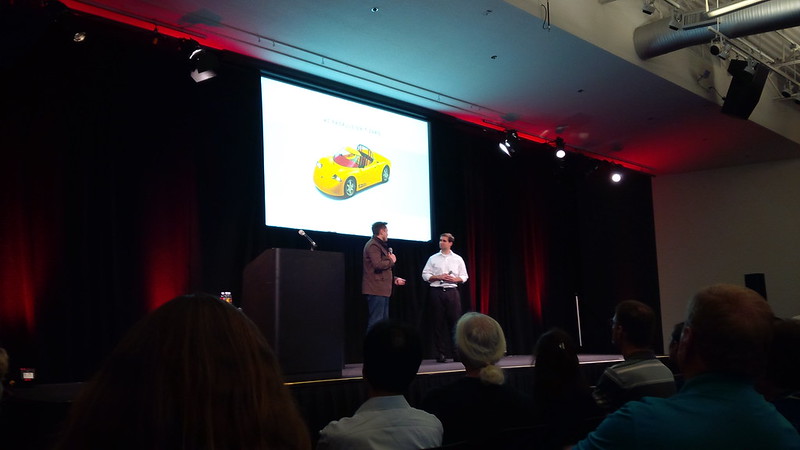
Covering Daimler’s investment and life raft to Tesla.
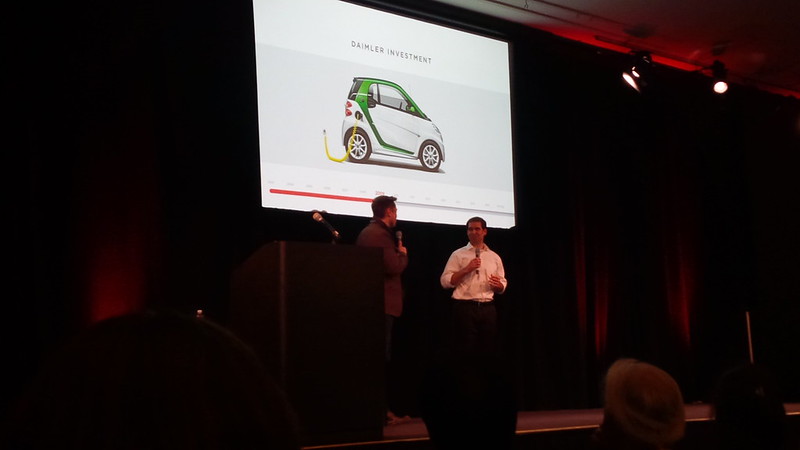
Tesla Energy and the Power Wall

Model 3
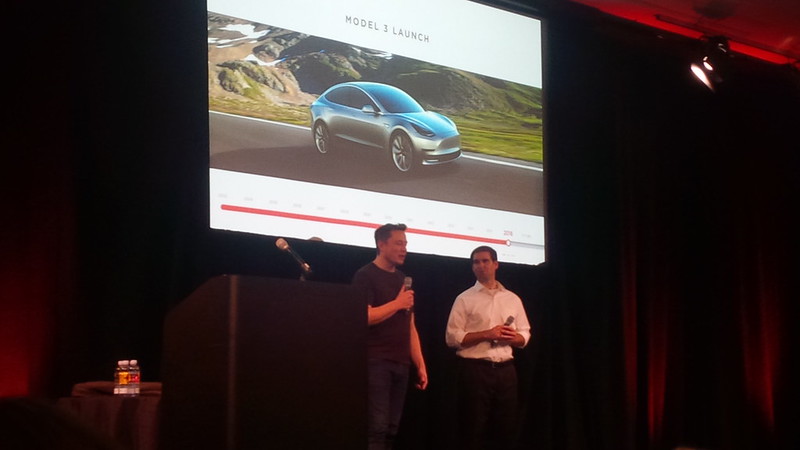
Getting all the long term talent to join them on stage.
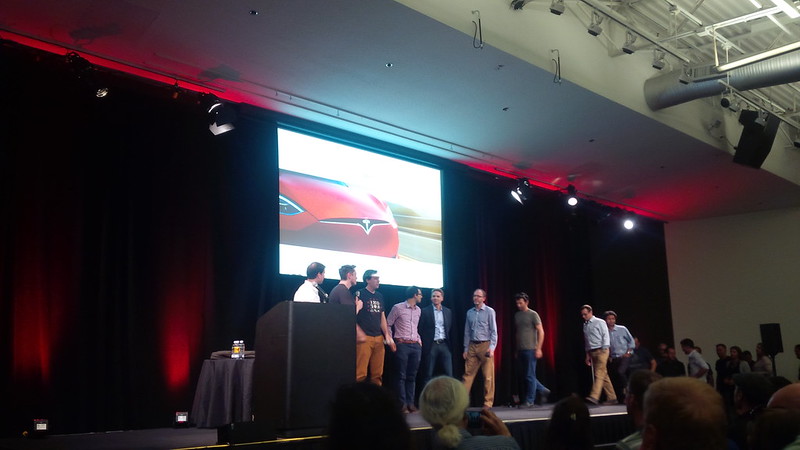
I have a few more in my theories on the history lesson post or on my flickr stream. I stopped taking pictures during the Q&A period.
It was a long meeting and that really provided us with clarity on our route and plan. We originally skipped lunch because we had breakfast at the hotel and were not ready for an early lunch. We were tempted to try to join the TMC group, but we weren’t done with the meeting until early dinner time and we needed to head South. So, we ended up just going on the road and determined to take the I-5 route.
Before we exited the building, we did stop by to check out a display on the Google Autonomous Car.
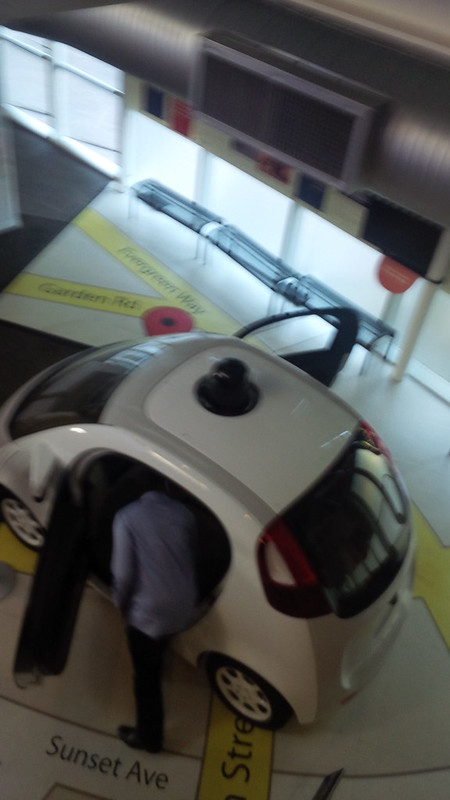
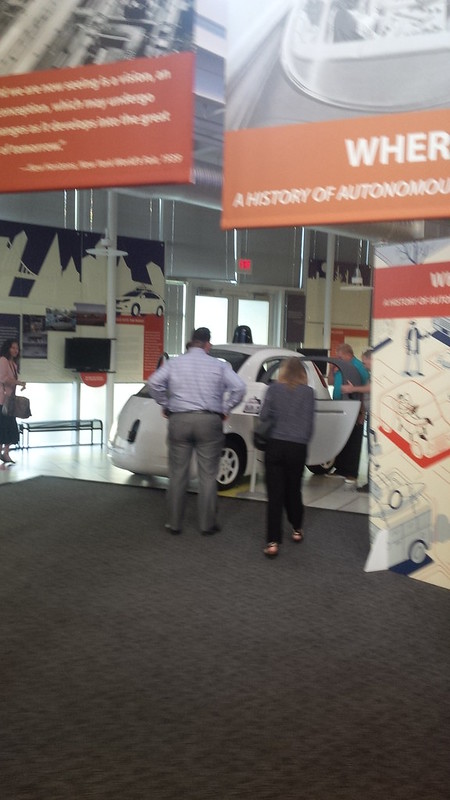
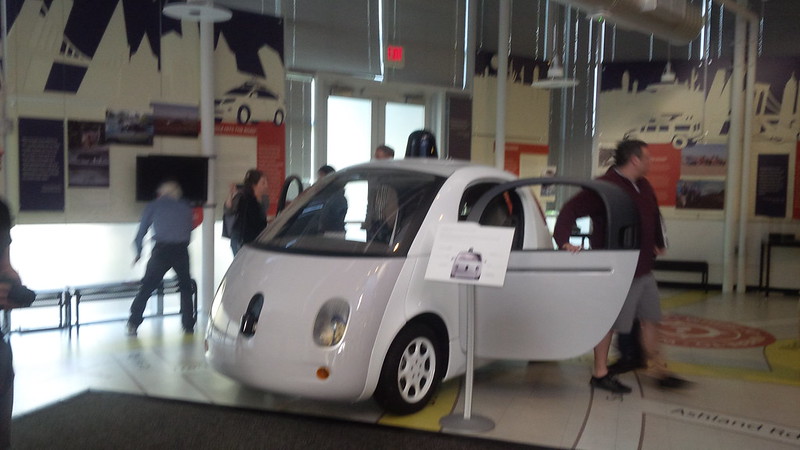
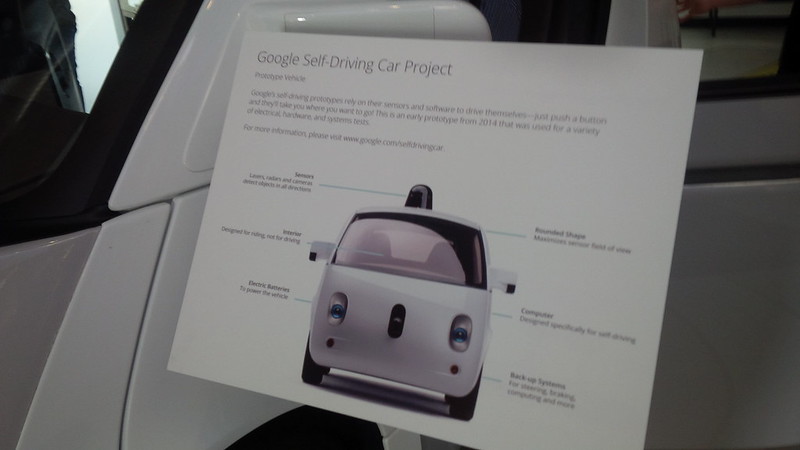
Here’s a quick shot on the inside:
Looking down.
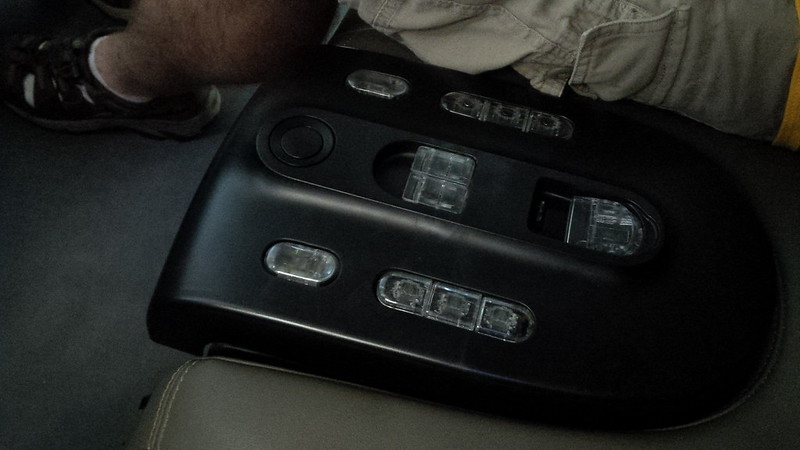
Looking forward.

So, we decided to roll-out and see if we can make it to Harris Ranch for dinner.
Gilroy Supercharger
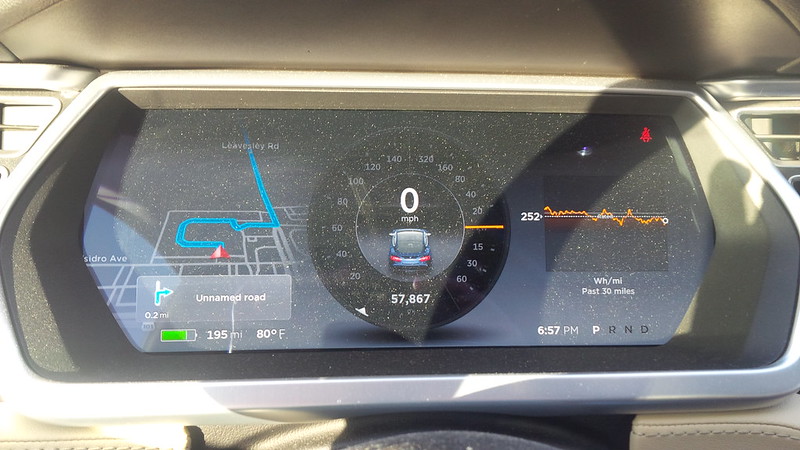
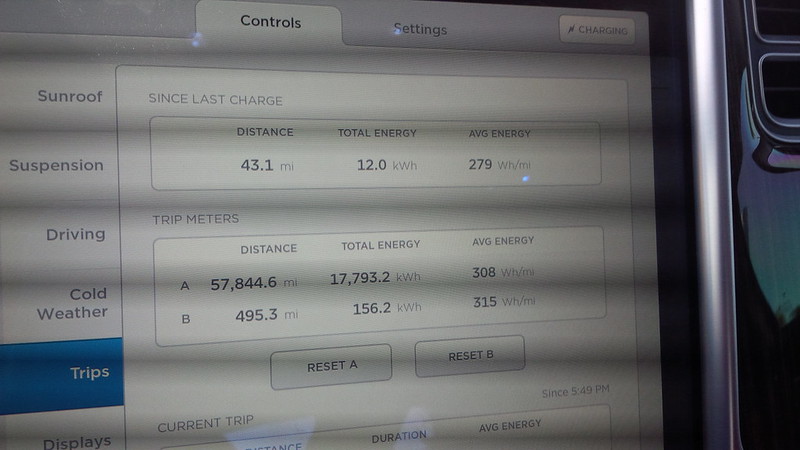
However, we hit a lot of traffic and I couldn’t make it all the way to Harris Ranch and proposed we stop off at one of at In-N-Out instead. Luckily enough, there’s one just around the corner from the Gilroy Supercharger. Even though we could’ve skipped Gilroy to make it to Harris Ranch, we decided to plug in while we had dinner.
The thing about traffic is it’s very efficient for the consumption of energy as we averaged 279 Wh/mile, lately it’s been the passenger’s needs that ends up motivating usto stop on these drives. This time, it was for hunger.
It was interesting to do this drive between Gilroy and Harris Ranch after finally getting some rains this past year. However, the effects of the drought are still evident.
This little duck pond by the side of the road in Gilroy showed up on the GPS last year and was dry. And it looks like it’s back now.

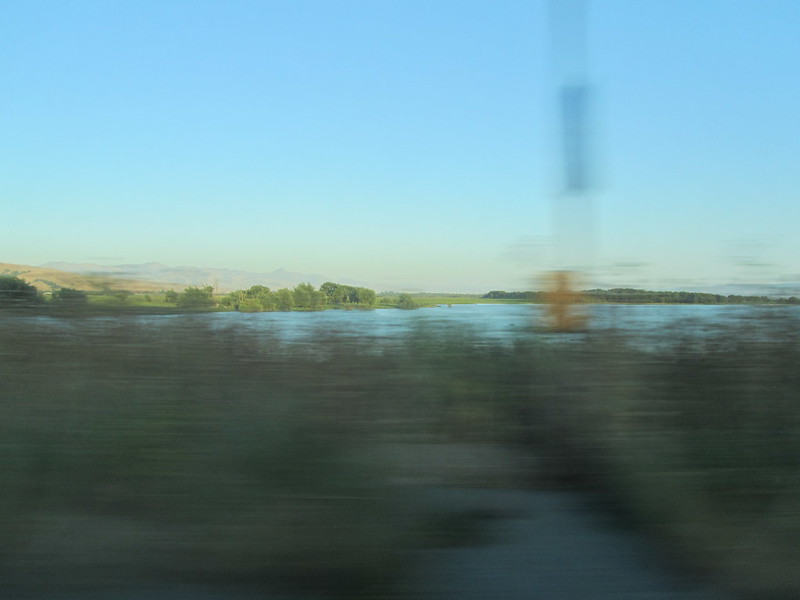
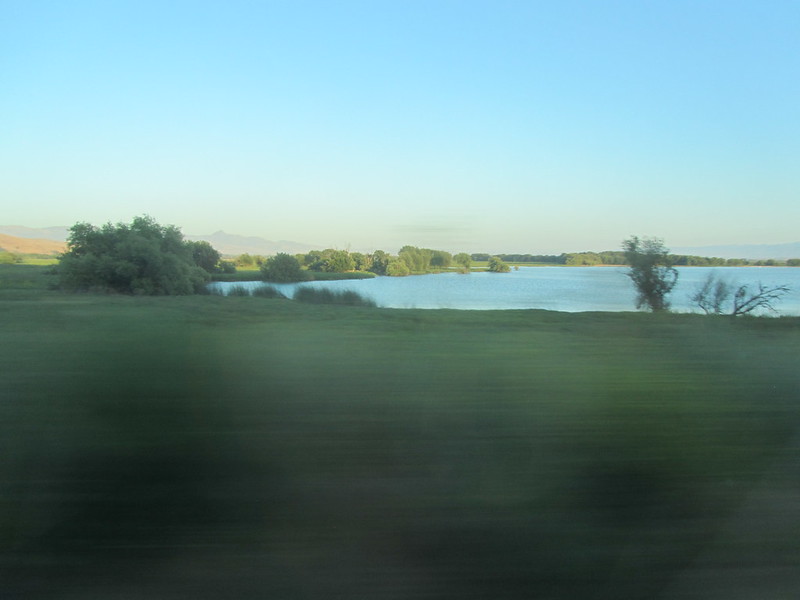
I wonder if that pond will be there throughout the summer, or whether it will evaporate again.


We left a lot later than we thought so much of the drive for day two will be in darkness, but we’ll at least have light for some of the more interesting parts of the I-5 route.
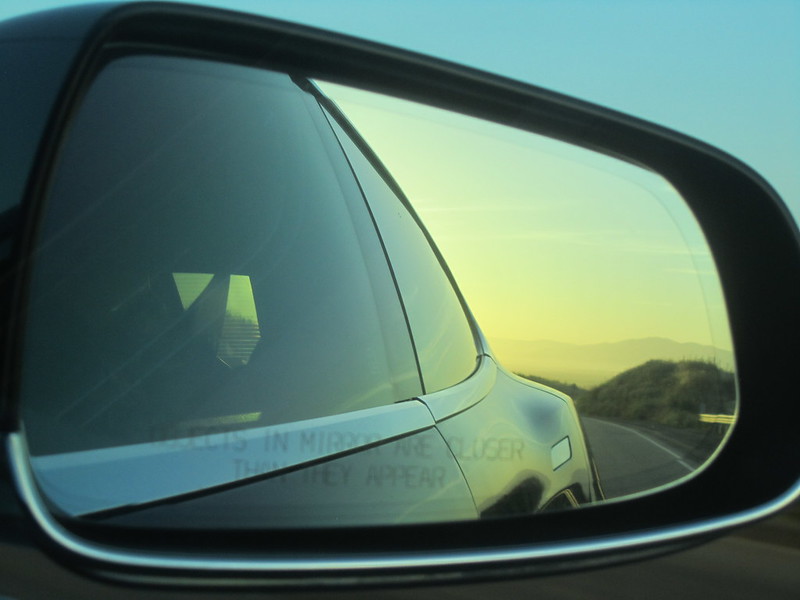
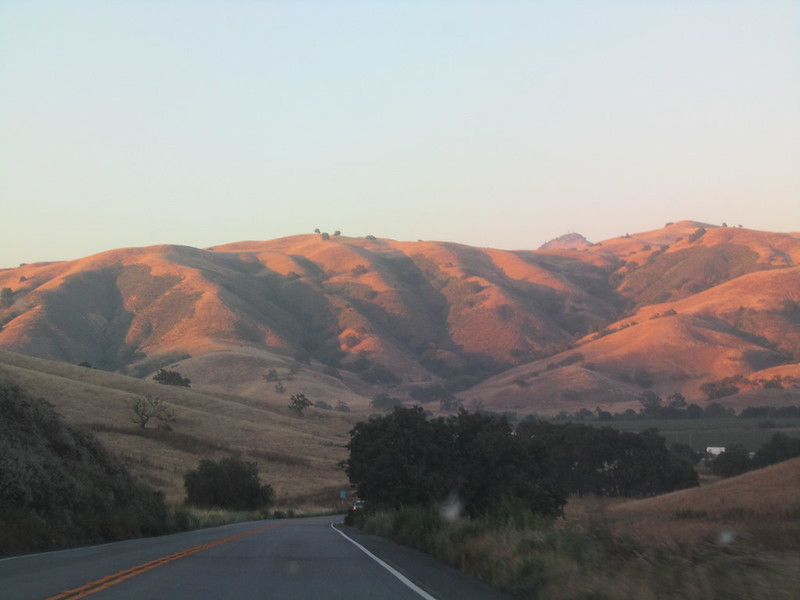
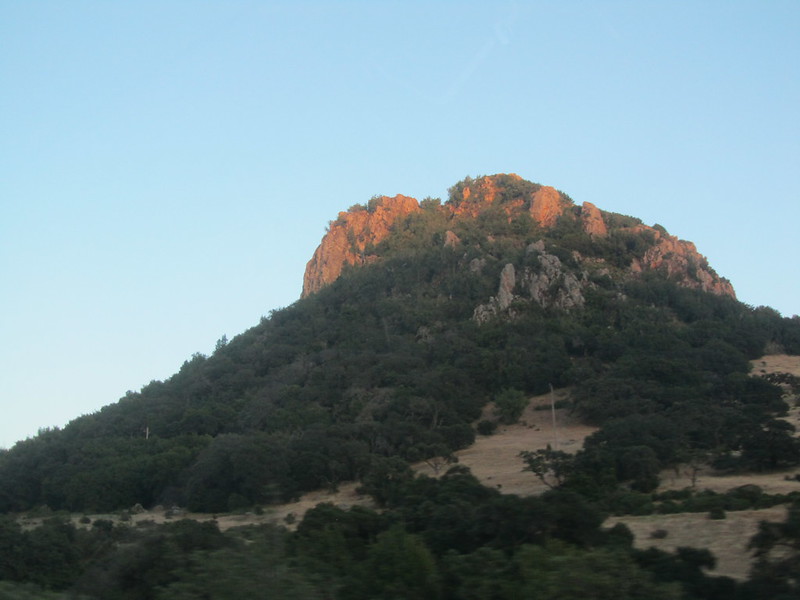
We got to the area of the reservoir between Gilroy and I-5 at dusk, so my wife tried to take as many pictures as she can so we can see if it received strong relief from the rains this past winter or not.


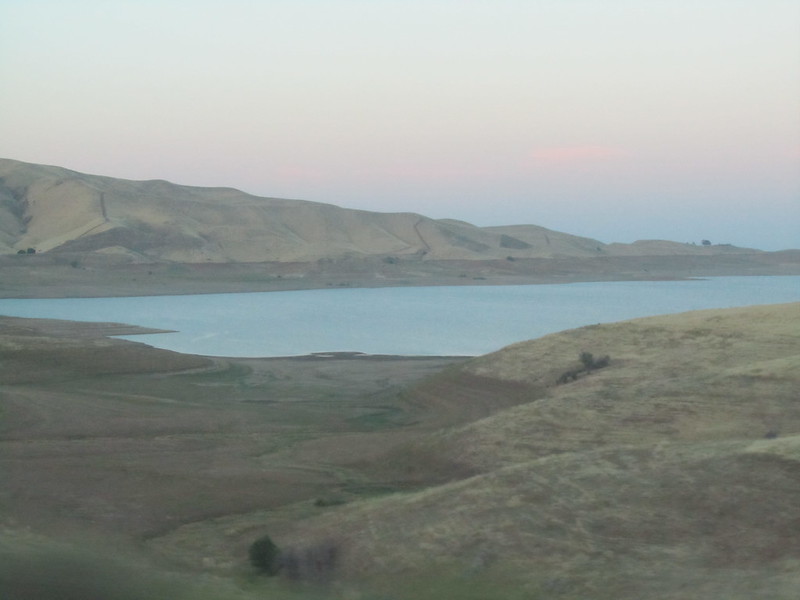

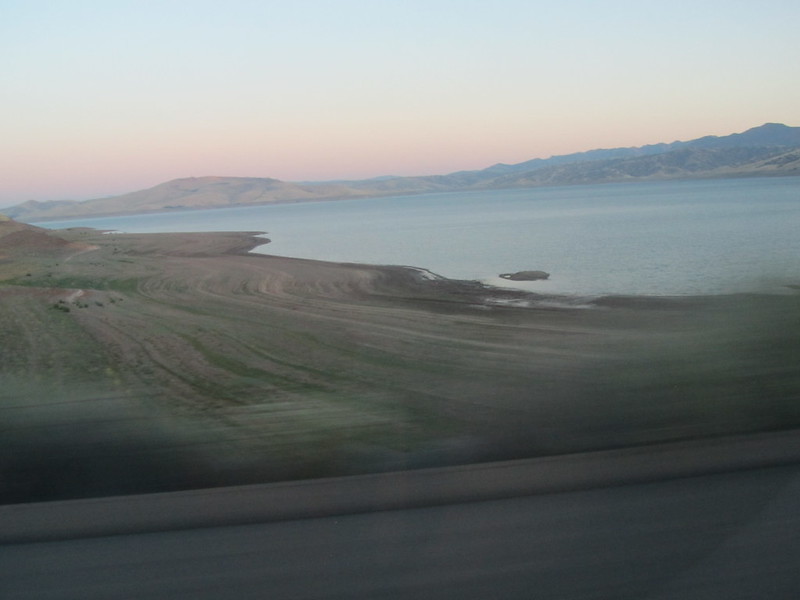
I think it looks better, but not much relief.
And just before we reached Interstate 5, we descend upon darkness.
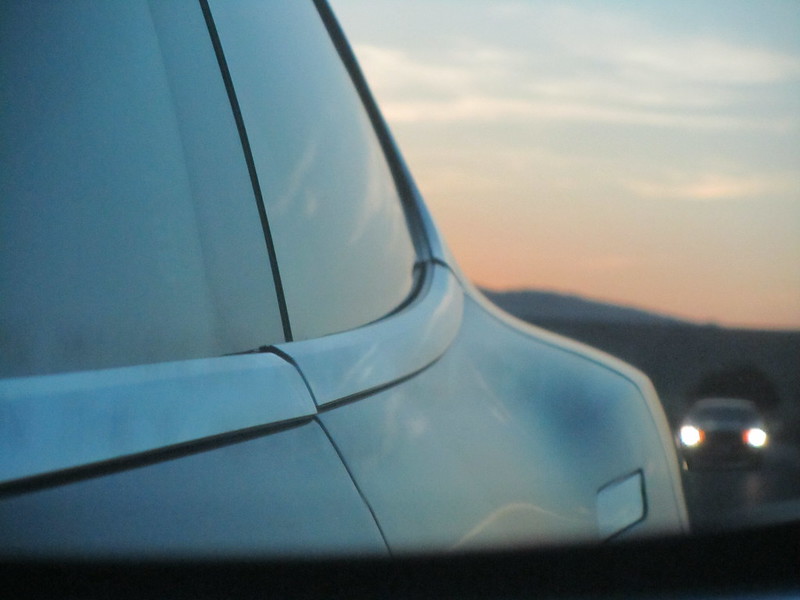
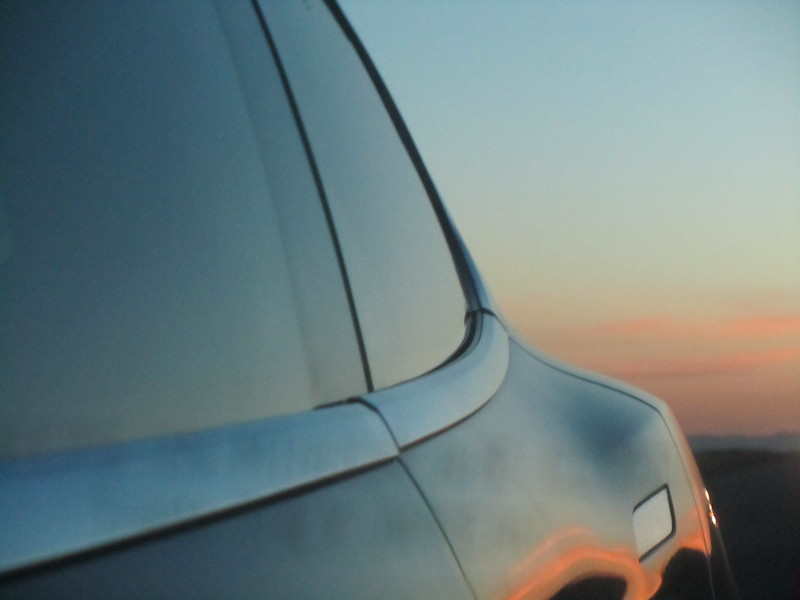
Since we filled up at Gilroy, we had enough charge to drive all the way to Tejon Ranch and skip Harris Ranch and Buttonwillow to make it all the way home. However, we’ve never been to the Buttonwillow Supercharger and I wanted to check those out.
Harris Ranch Supercharger
Remember what I said about having enough charge…
That’s what the navigation is saying when you end up at a supercharger that you can skip.
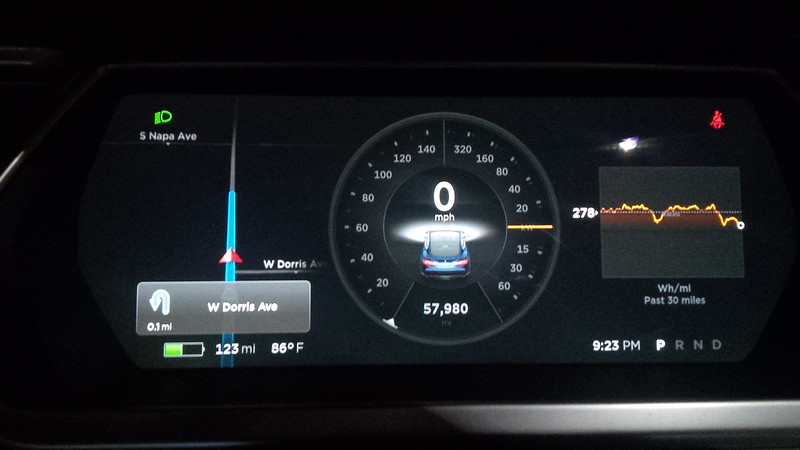
We had to stop, ’cause of other needs, and it’s not because the car needed a charge.
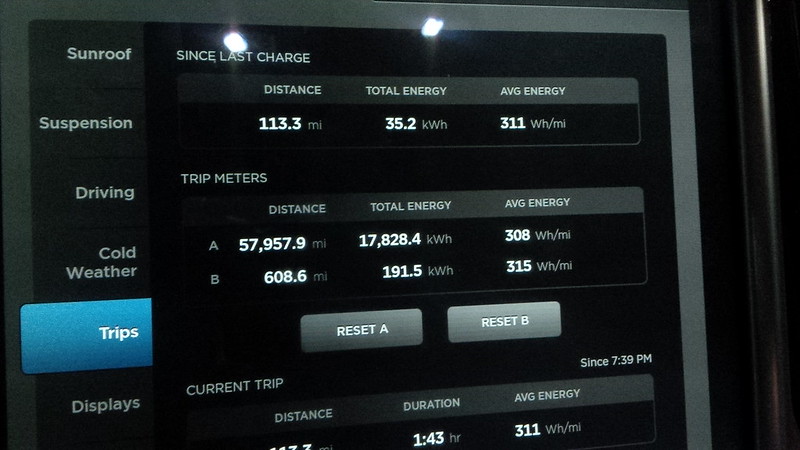
The temporary superchargers have been removed and replaced by augmented by more superchargers. Interestingly enough, there are 13 superchargers at Harris Ranch. Which means, folks should try to grab 7A as it is not paired with any other stall. It was pretty empty when we got there, so I skipped that choice.
I was able to capture a pretty cool dark red glow of Tesla Superchargers in the darkness. If you couldn’t tell from the panoramic, stall 7A (#13) is at the far right of the picture, and we’re parked at stall 6A (#11).

With the travelers needs taken care off, we took our leave and proceeded toward Buttonwillow supercharger. Granted we had enough energy to skip that and get to Tejon Ranch (40 miles further) comfortably, I wanted to see Buttonwillow and “add a supercharger” to my visited list.
Buttonwillow Supercharger
The last time we stopped off at Buttonwillow, we were actually there to use the truck stop across from where Tesla eventually added the Buttonwillow supercharger. It was also at this stop where we noticed a trailer full of Teslas being sent from the factory.
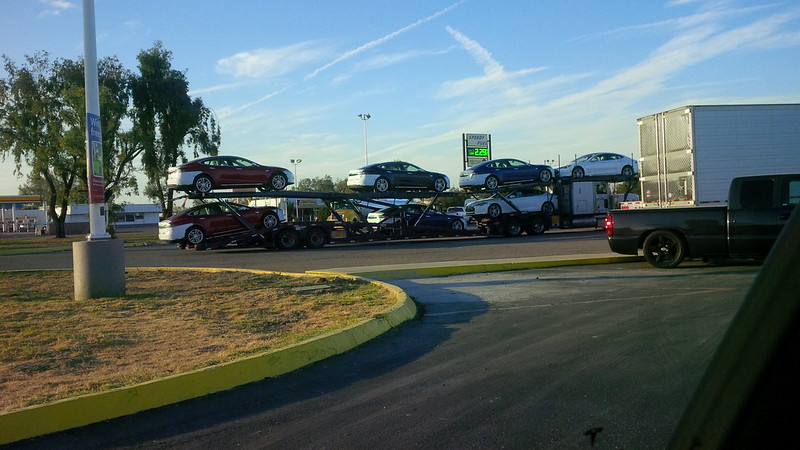
This time, we were across the street by the Starbucks.
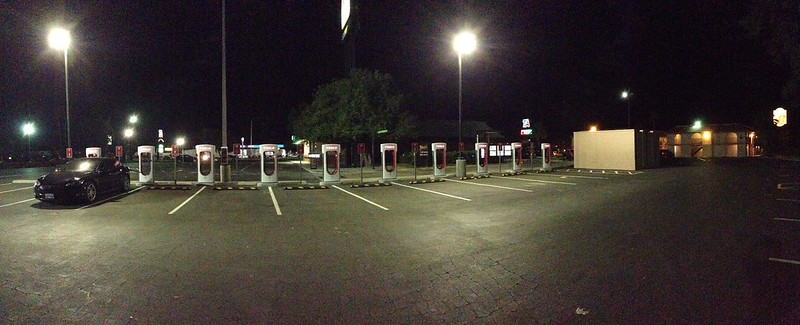
I think the official sponsor for the parking lot might be the hotel next door, otherwise it’s a big, empty parking lot. What is disconcerting regarding this supercharger location is one has to park with your back to the street. This is normally not a problem, but when one stops at 11:00 PM, one can get paranoid. Granted, the location was well lit, but the lighting made one feel like a spotlight was on one’s self.

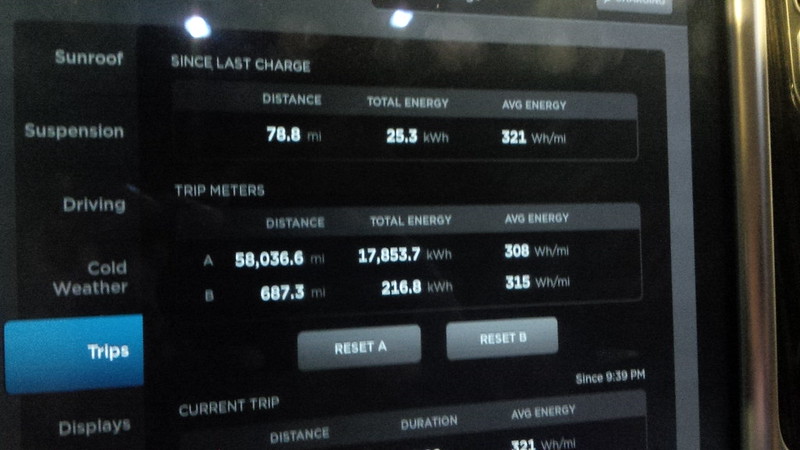
As previously mentioned, we didn’t have to stop here, the trip planner was recommending that we stop at Tejon Ranch, so we had to estimate our own “fill up” at the location. We stopped for about thirty minutes before we proceeded to drive straight home. Since we were at the location after 11:00 PM, none of the nearby businesses were open. The truck stop across the street was open 24 hours a day seven days a week, if one needed to use any facilities while charging here. This is a situation similar to the Tejon Ranch stop, so if traversing through the area during “off-hours” and facilities are a consideration, I would suggest the Buttonwillow one anyway. The truck stop is closer to the Buttonwillow one than the ones at Tejon Ranch.
Purposely skipping the Tejon Ranch location can “play with one’s head” because the toughest incline of the drive (aka the “Grapevine”) starts just South of Tejon Ranch and there was always something comforting starting that incline with a “full” tank. We’ve often measured a 40 mile loss in the ten mile ascension in that drive. (Granted the next twenty miles barely consume any mileage at highway speeds, but it’s that initial climb that throws me off.) Working off previous experience and mental note taking that we had from Tejon Ranch, we saw that “starting off with momentum” for the climb, i.e. from driving from highway speeds for 40 miles before making that climb up the “Grapevine”, means that what used to cost us 40 miles in range only cost 35 miles based until we hit the summit and had the downhill and regeneration for the remaining 20 mile descent into the Los Angeles area.
Home
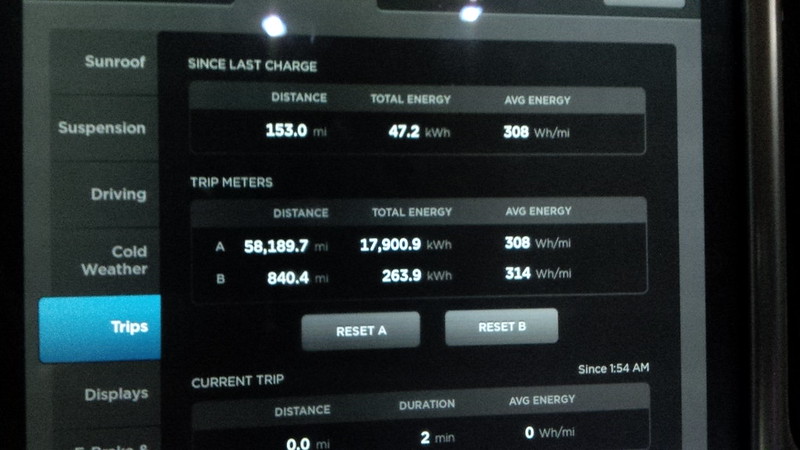
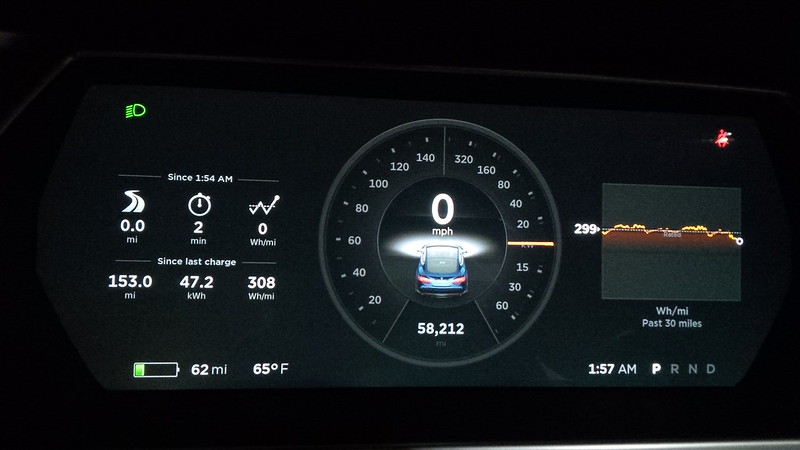
Interestingly, the longest part between stops on today’s drive was the one between Buttonwillow and home. Additionally, I drove at my vehicle average in consumption during that portion of the drive 308 Wh/mile.
The great thing about the drive was that it gave my wife and I time to digest the presentation that we attended and discuss some of our theories. These discussions yielded the previous post.
Looking for Day One of the Drive, click here.

